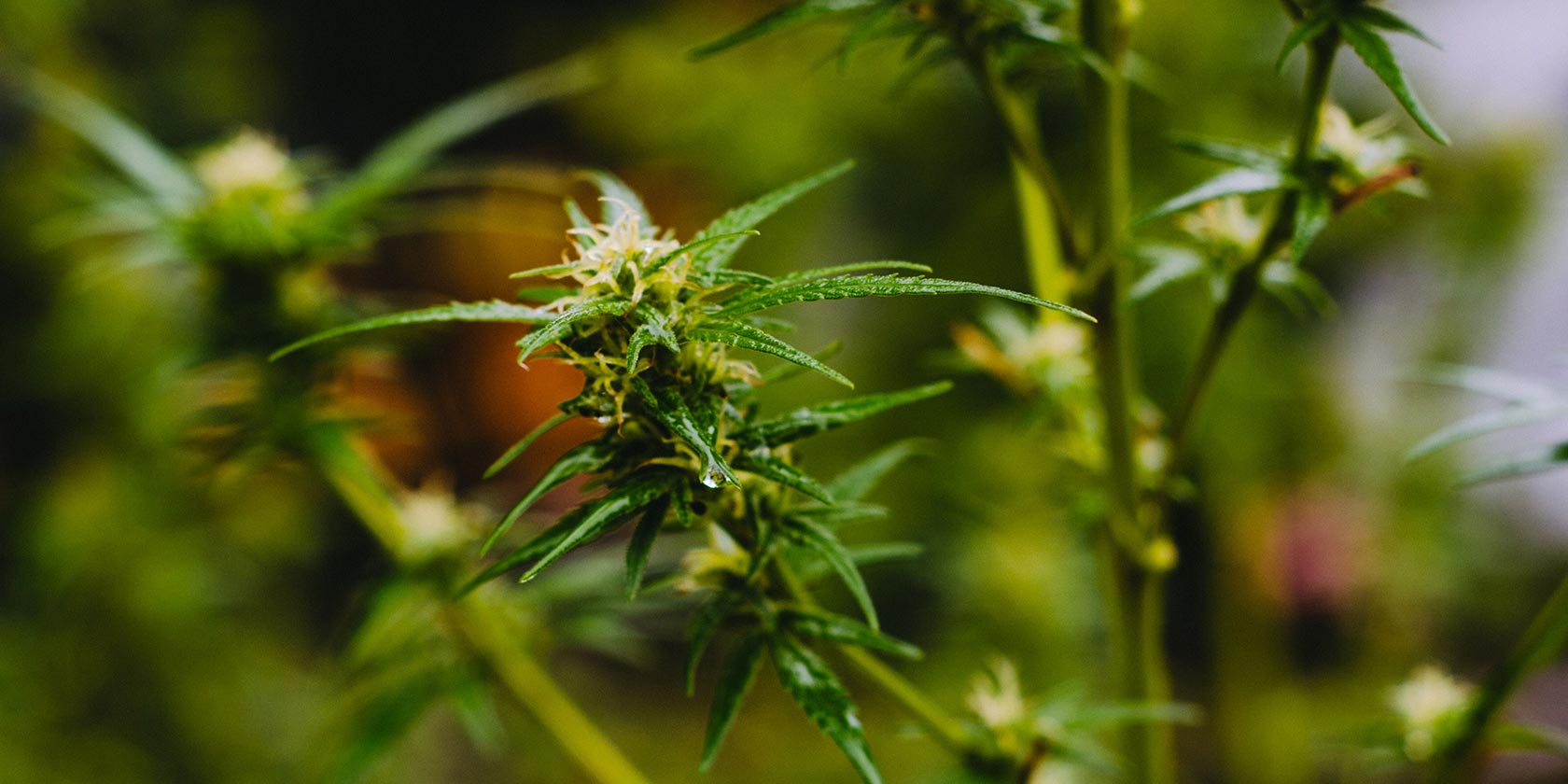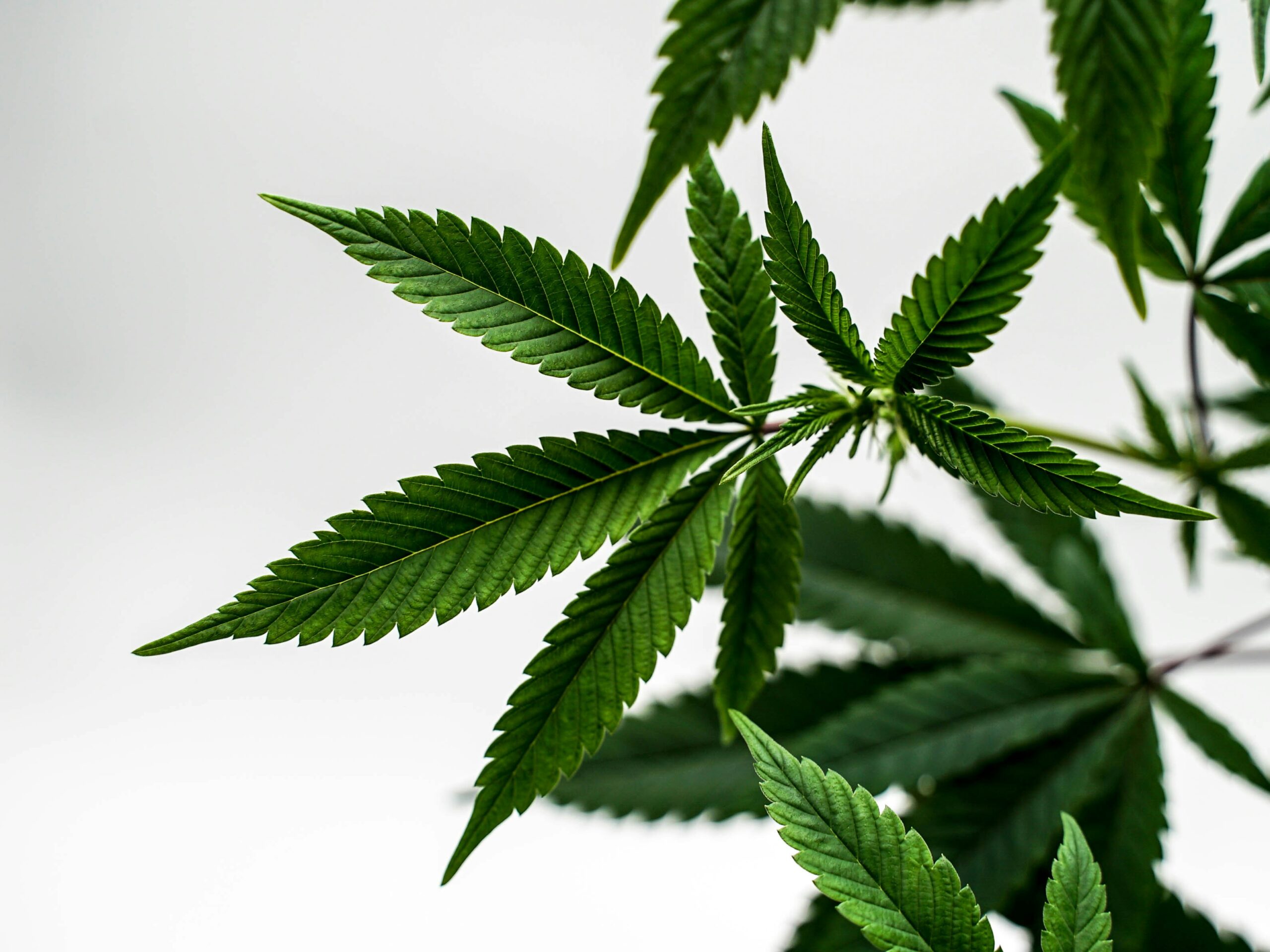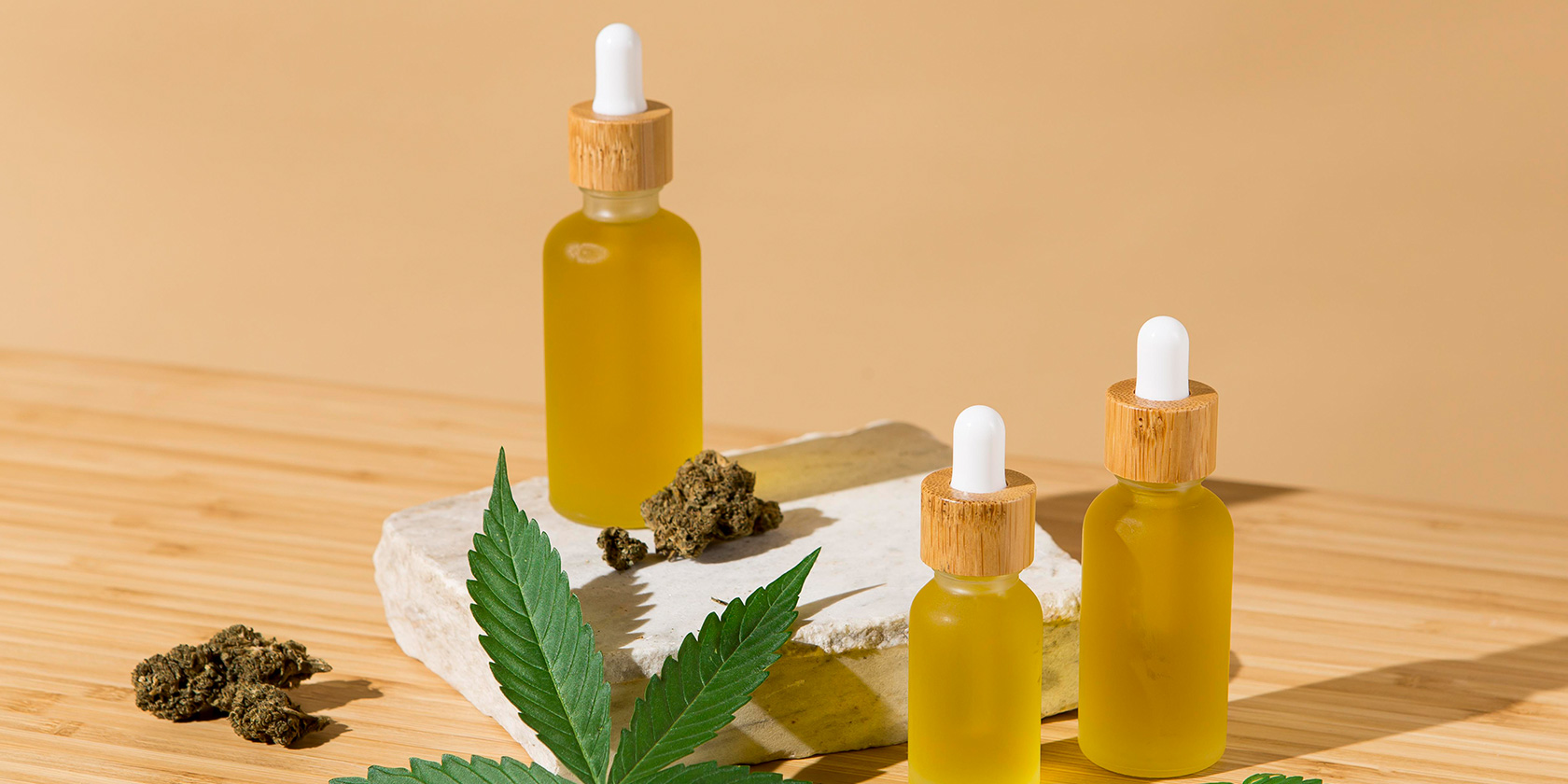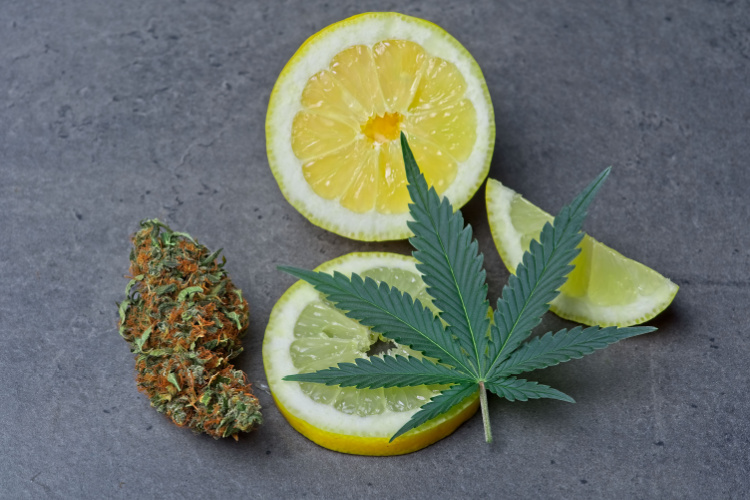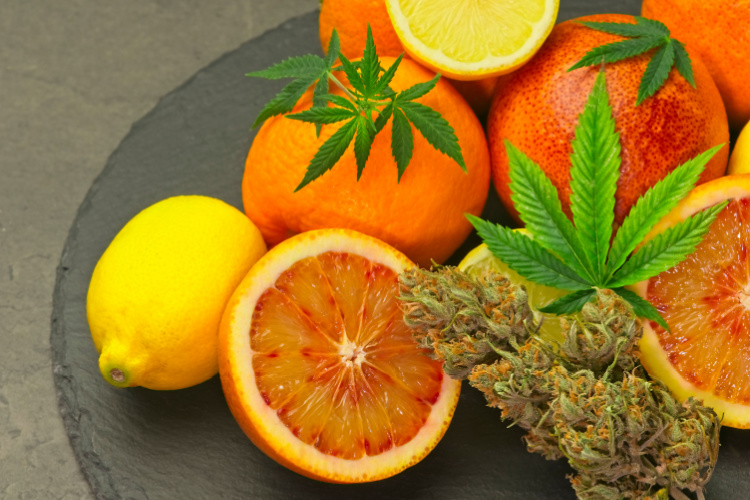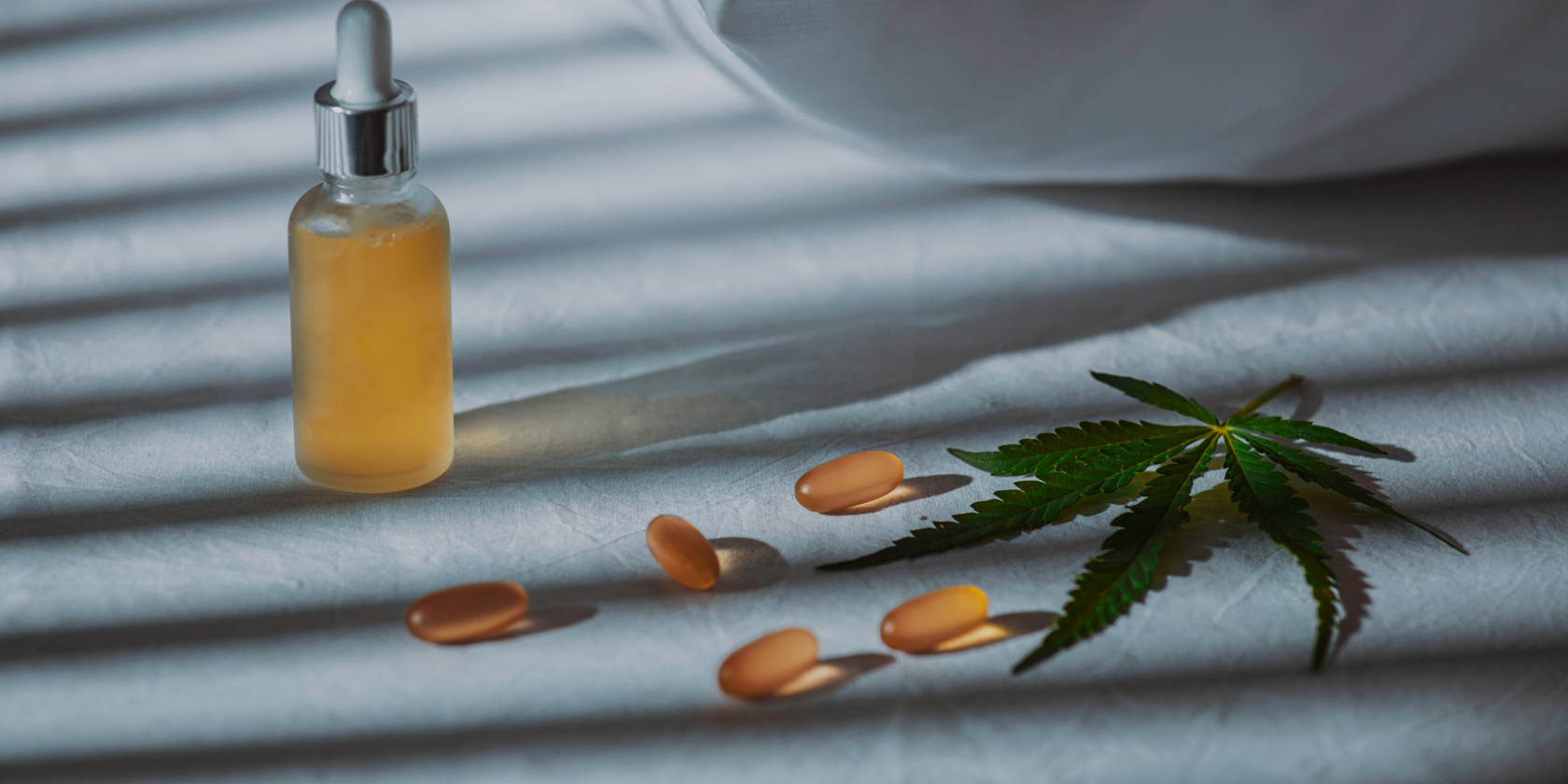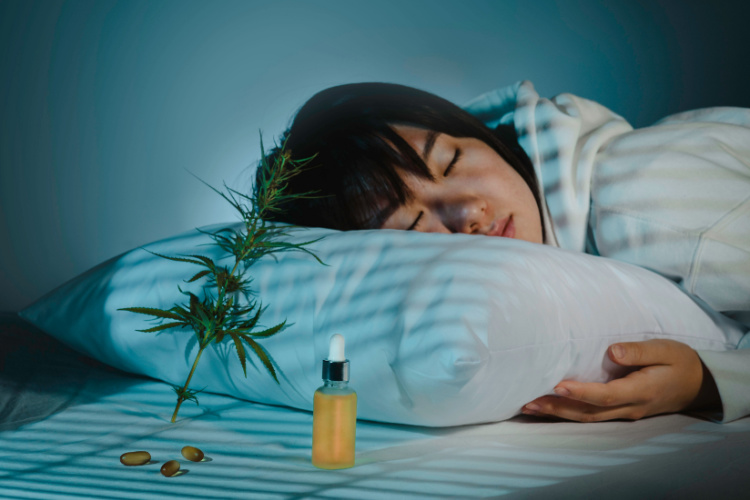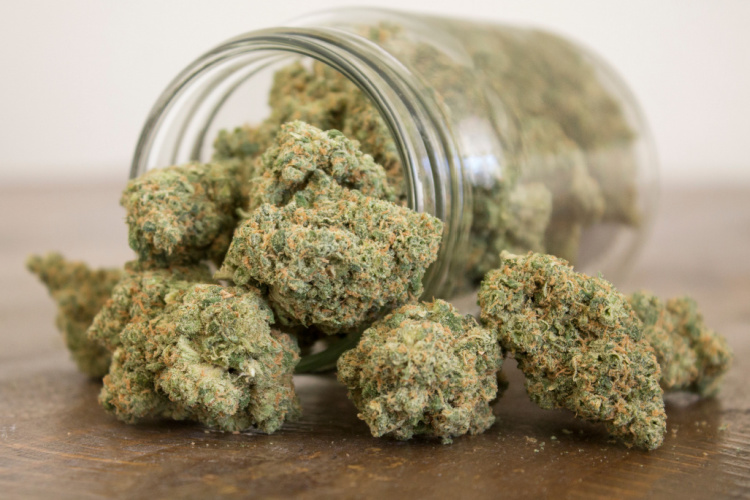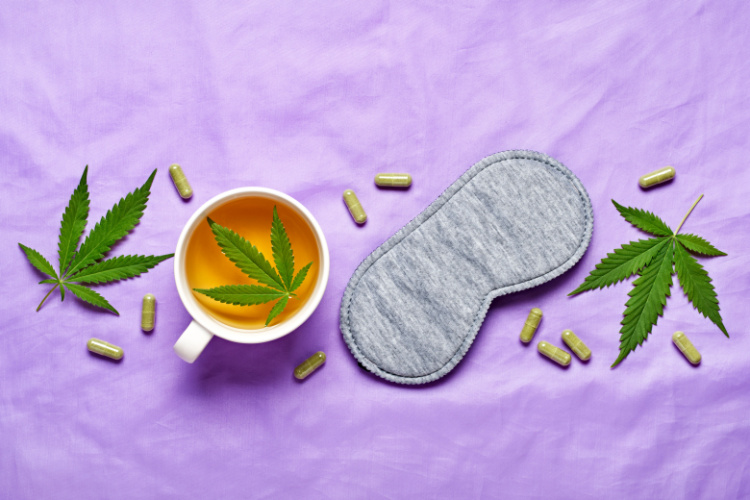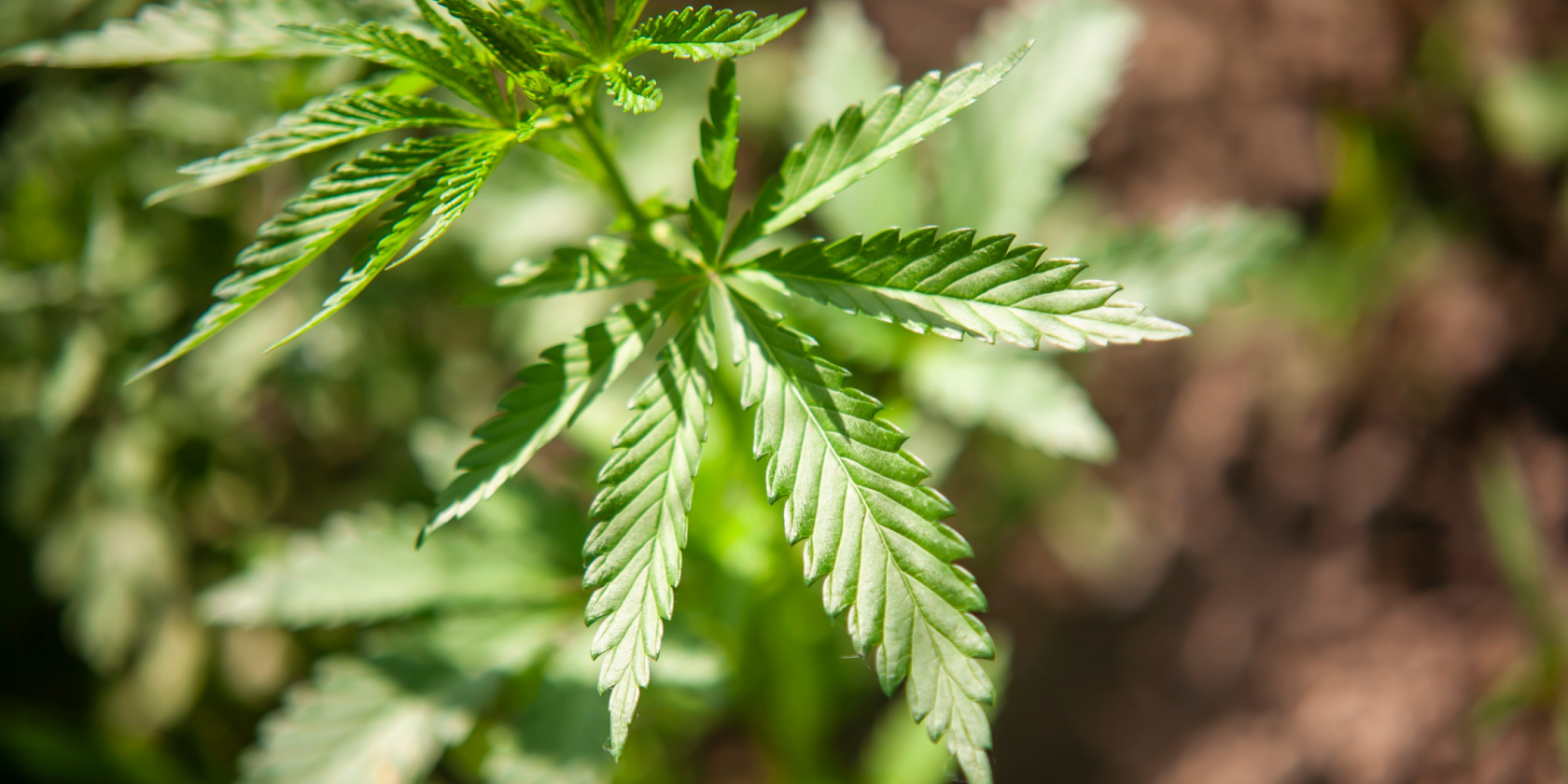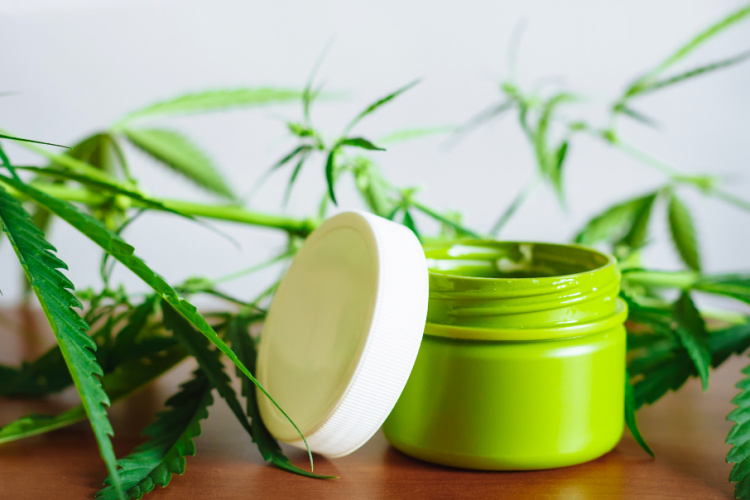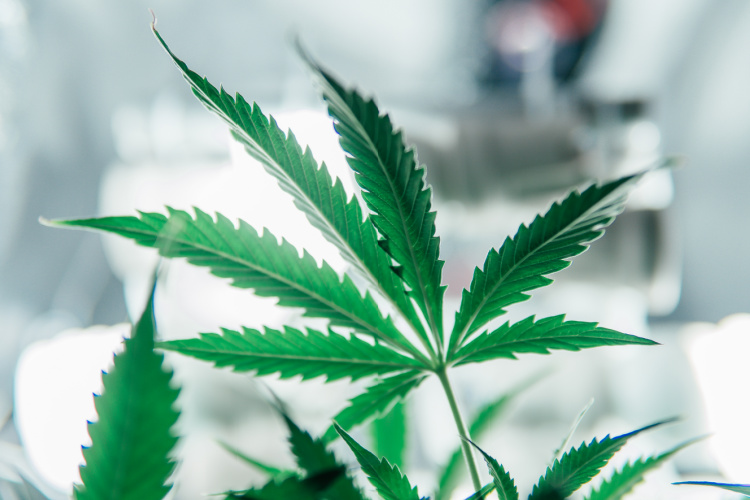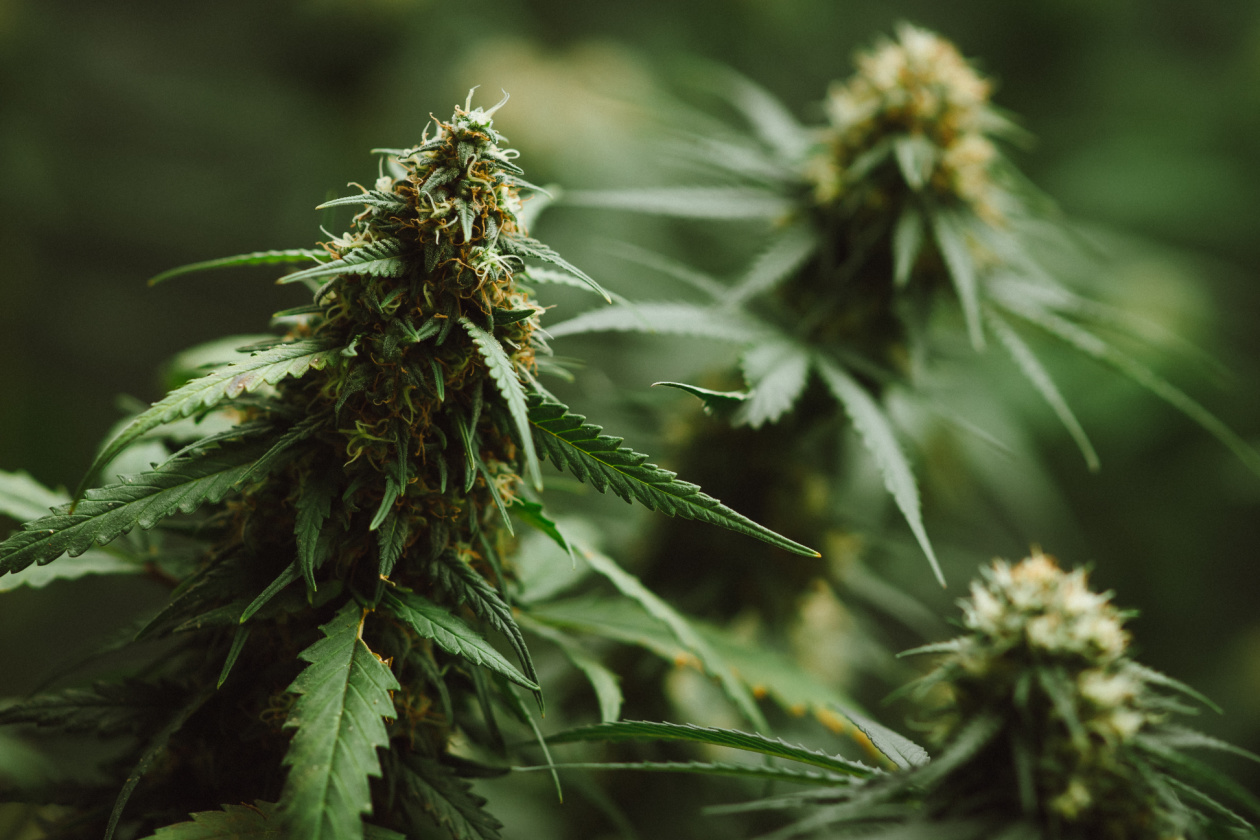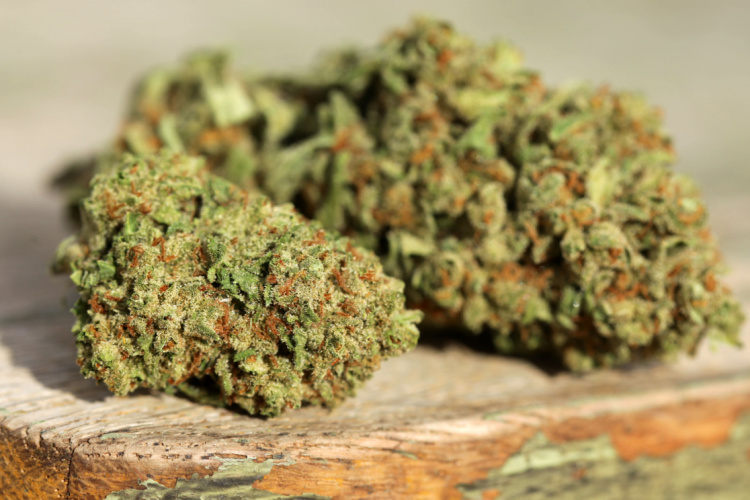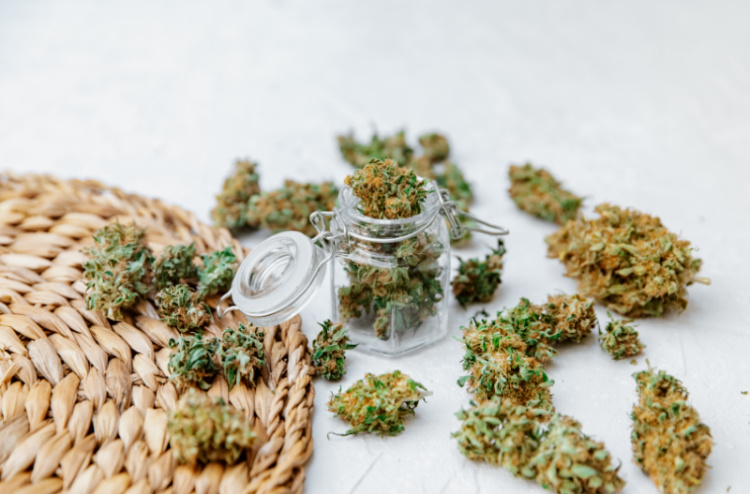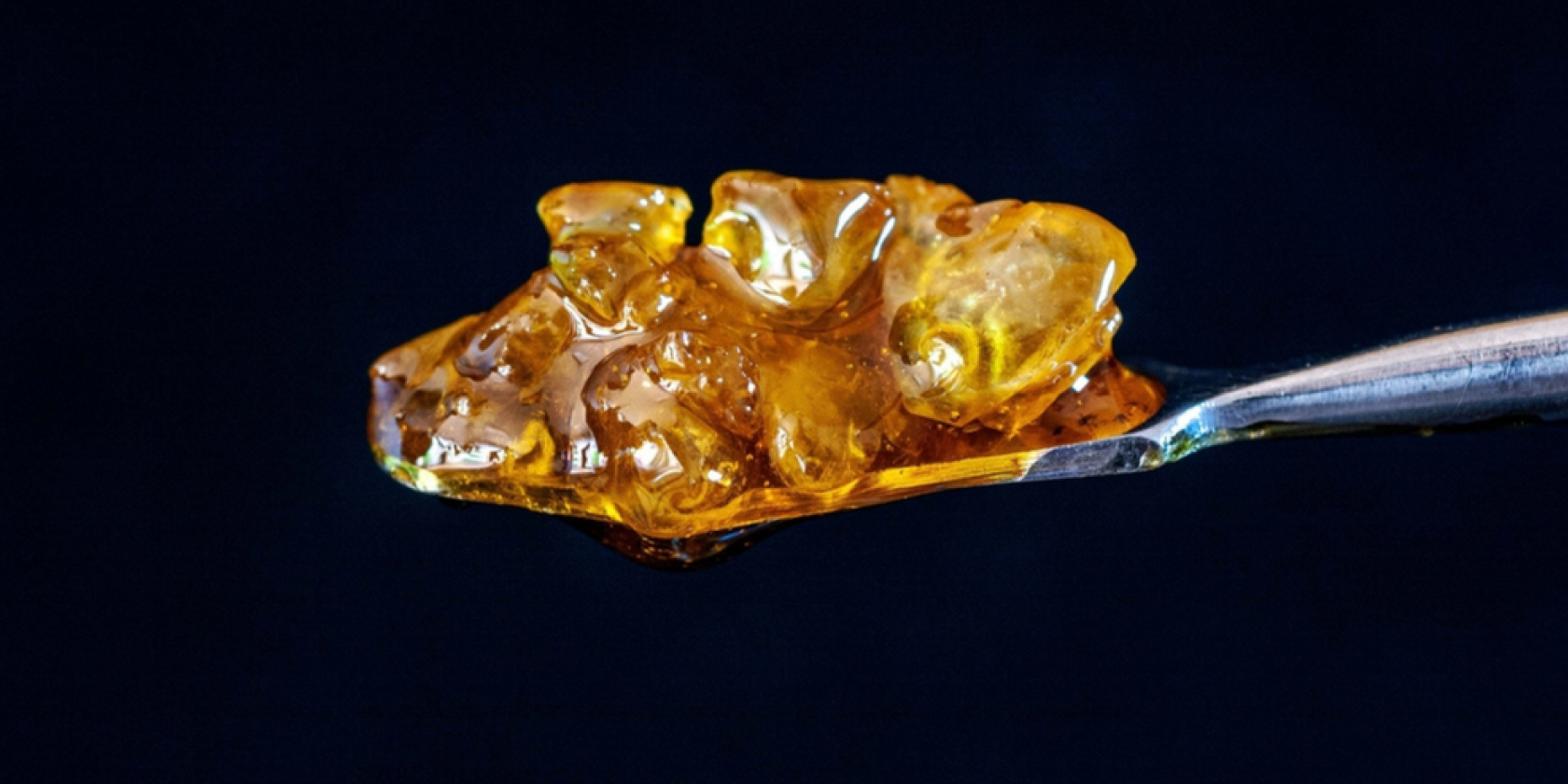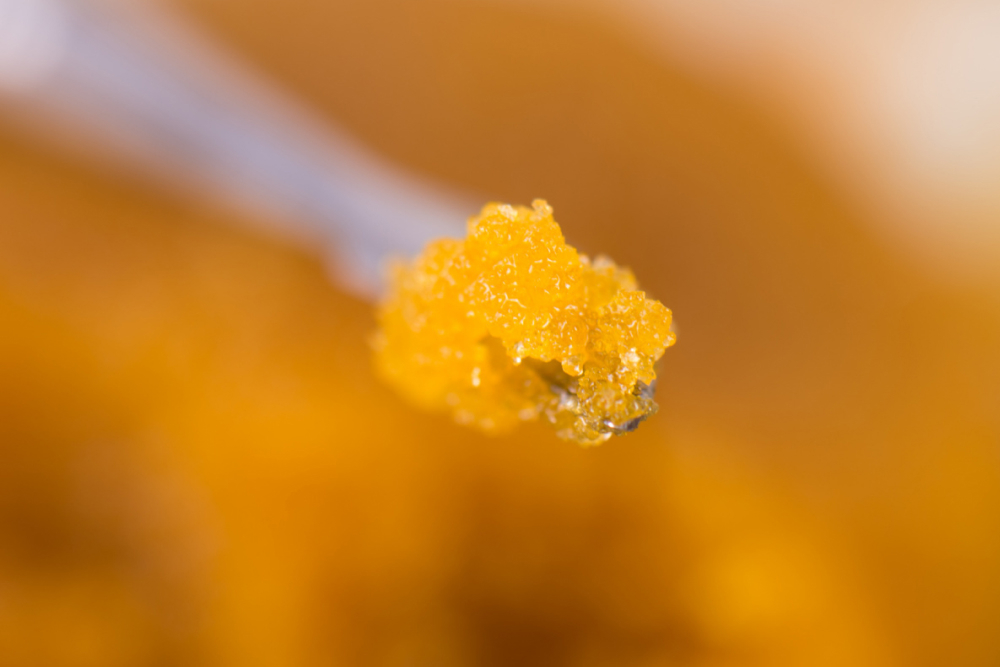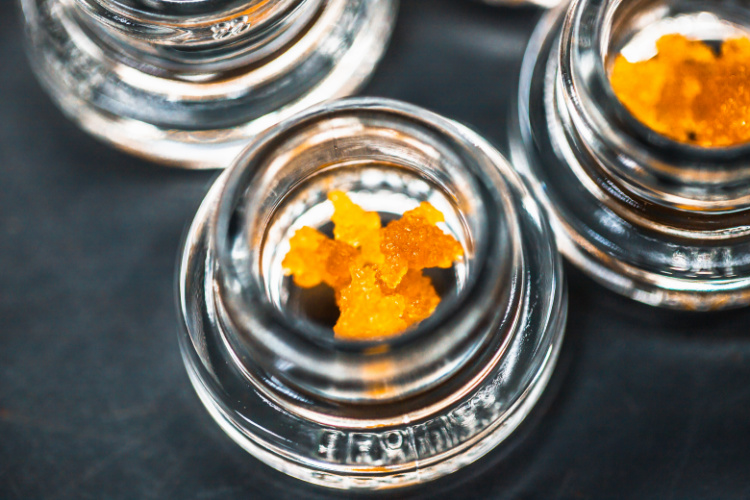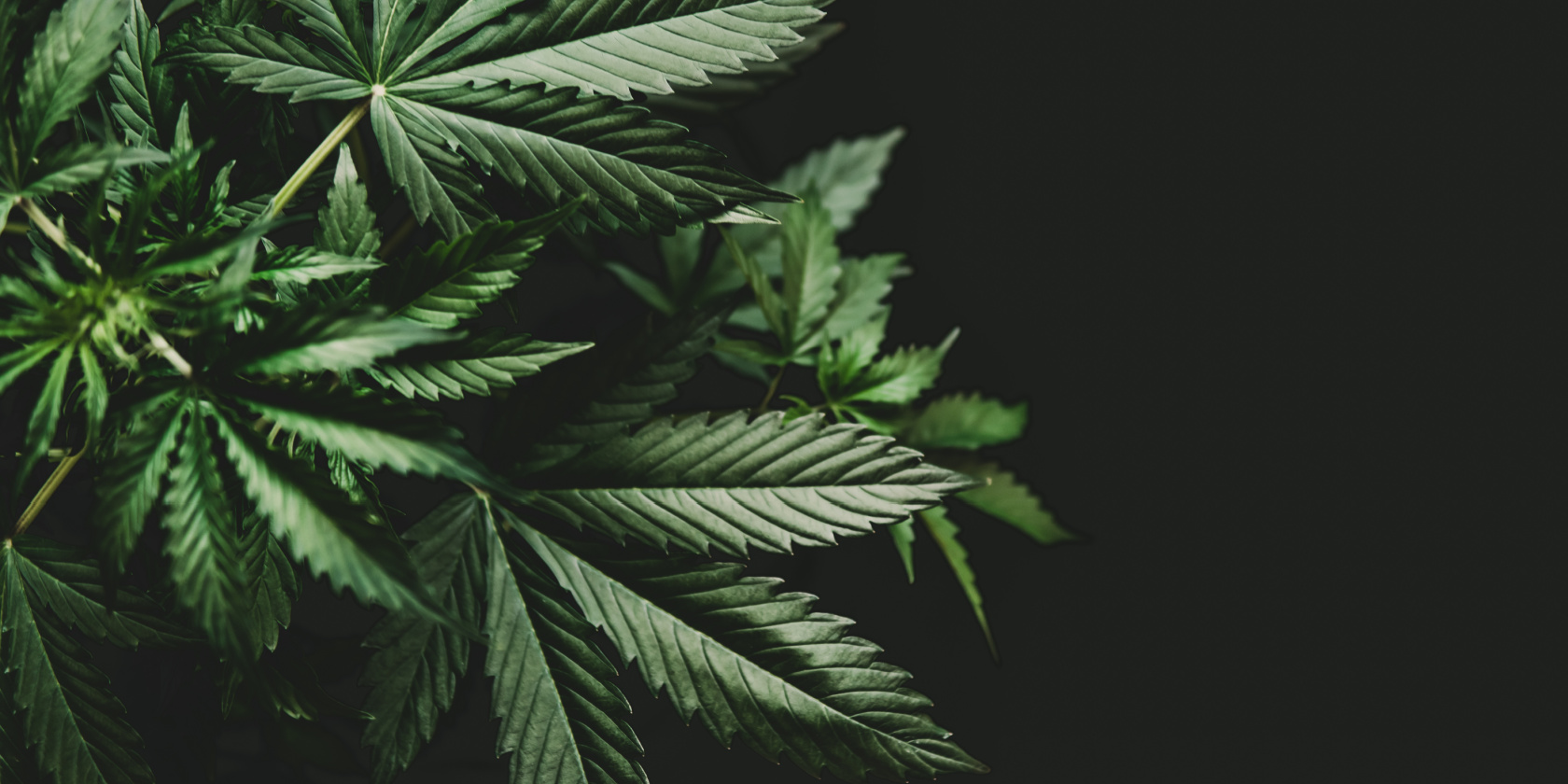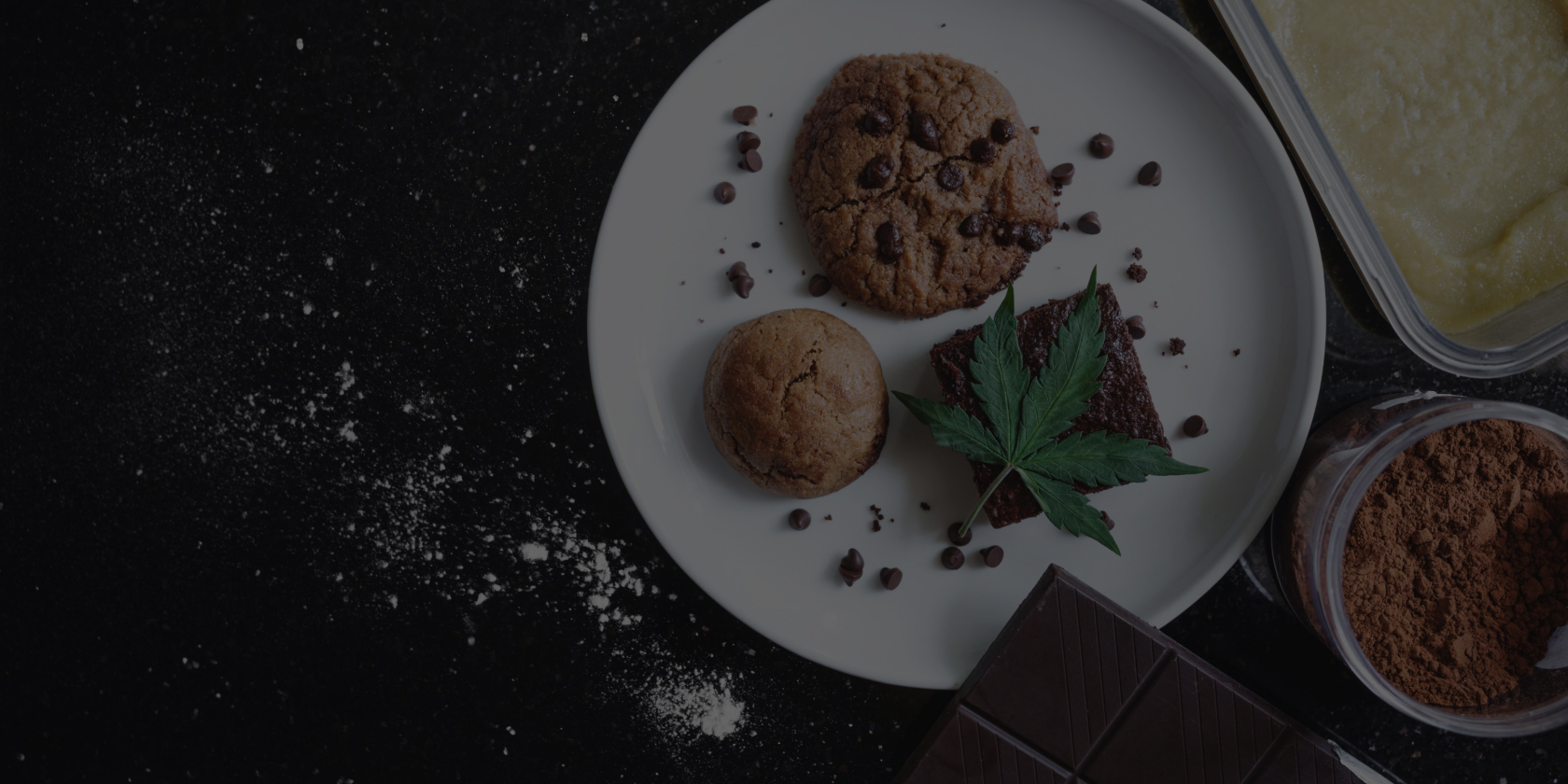What Is Myrcene? Your Guide to This Important Terpene
Mysterious, aromatic, and beguiling, terpenes are one of the most fascinating compounds in the cannabis ecosystem. As the primary olfactory components in the marijuana plant, terpenes contribute a dizzying array of scents, flavors, and potential medical benefits to cannabis strains. And without any doubt, the most crucial of them all is the topic of today’s post: the myrcene terpene.
What is myrcene, and what makes it so special? Sometimes referred to as “The Mother of All Terpenes,” myrcene plays an outsized role in the cannabis world, imparting its own list of effects and aromas while helping synergize the actions of other molecules. In this article, we’ll help you get your head around this cannabis power player, covering such questions as:
- What is myrcene?
- What does myrcene smell and taste like?
- What are some common myrcene terpene effects?
- What are some documented myrcene benefits?
Okay, let’s get rolling….
What Is Myrcene?
We’ve written previously about terpenes, and how they play a major role in determining the aromatic profiles of specific cannabis strains. Linalool, for instance, contributes a distinctive lavender-like aroma to classic Kush strains, while limonene adds a citrusy bite to strains in the “Purple” family. But the myrcene terpene is truly in a class of its own.
It is the most abundant terpene in cannabis by weight and the primary cannabinoid in the plant. While you might not pick out myrcene’s aroma on its own—more on that in a moment—you’d definitely notice if it weren’t there. And that’s the perfect excuse to turn to a discussion of the sensory experience of the myrcene terpene.
The Myrcene Terpene: Aromatic and Flavor Profile
Even if you’re new to cannabis, you’re probably familiar with “that weed smell.” And while myrcene is only one of the literally hundreds of terpenes found in cannabis, it contributes a distinctly earthy and clove-like scent— some compare its aroma with that of ripe fruit or aged vinegar—that at higher concentrations can turn downright pungent. Elsewhere in nature, myrcene is found in thyme, mangoes, lemongrass, and the hops that flavor most beers.
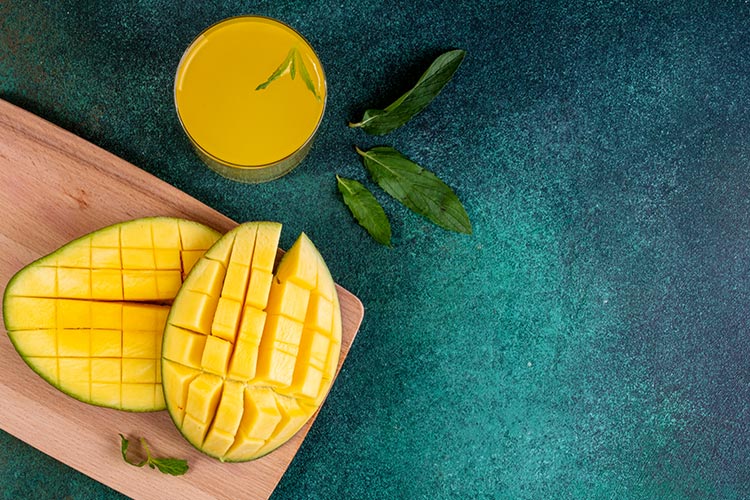 Which strains are high in myrcene? We’ll explore that in more depth in a moment, but given how prevalent myrcene is, it might be easier to find ones that aren’t! As such, myrcene makes an appearance in every strain, from the cerebrally stimulating Blue Dream to the heavy-hitting OG Kush to CBD-rich Harlequin, a favorite for inspiring creative spark.
Which strains are high in myrcene? We’ll explore that in more depth in a moment, but given how prevalent myrcene is, it might be easier to find ones that aren’t! As such, myrcene makes an appearance in every strain, from the cerebrally stimulating Blue Dream to the heavy-hitting OG Kush to CBD-rich Harlequin, a favorite for inspiring creative spark.
This brings up an important point about terpenes such as myrcene and the role they play in cannabis. While terpenes exert their own effects on our bodies and our minds, they’re completely distinct from cannabinoids such as THC and CBD. If you’re looking for specific medical effects such as treating many of the symptoms associated with anxiety and depression or insomnia, we recommend you start by focusing on cannabinoid ratios first, as they’ll ultimately have a greater impact.
Speaking of impact, let’s turn to the topic of myrcene benefits, and why this single terpene has such a major effect on the cannabis ecosystem.
What Does Myrcene Do? Effects and Benefits
As a growing body of research suggests, terpenes play an important role in terms of imparting specific medical and subjective effects. Still, most researchers agree that myrcene is the most important one of them all, synergizing the actions of other terpenes and potentially interacting with cannabinoids such as THC and CBD.
In fact, we humans have known about myrcene’s benefits for a far longer time than you might suspect. Long before anyone even knew what cannabis terpenes were, myrcene was already in use as a natural inflammation fighter. Today, clinical studies back this up, demonstrating that myrcene exhibits both anti-inflammatory and analgesic (or “pain-fighting”) qualities as well.
Myrcene is often cited as a potential sleep aid. And at least one clinical study points to the myrcene terpene’s potential in fostering deeper, more restorative rest. That may be the reason myrcene was historically implicated in the infamous “couch lock” syndrome associated with indica-leaning strains of cannabis.
That said, it appears that theories linking myrcene to indica and indica-leaning strains are but a pipe dream. As at least one study suggests, cannabis is far too complex an organism to characterize on the basis of a single terpene, even one as important as myrcene.
However, it appears that myrcene is definitively associated with one very unusual characteristic in cannabis: Playing a role in the so-called “entourage effect” (sometimes known as “ensemble effect”). In simple terms, the entourage effect is a phenomenon by which the natural compounds in cannabis interact to exert more powerful effects than they would on their own.
First proposed by Dr. Raphael Mechoulam—the Israeli researcher who did so much to unlock the secrets of cannabis, including first identifying THC as the source of the plant’s distinctive “high”—the idea behind the entourage effect suggests a vastly complex web of potential interactions between the many compounds found in cannabis.
While there’s far more to be learned, clinical research so far suggests the effect is real, even as its exact mechanisms remain unknown. For instance, one study from 2021 suggests that myrcene may work in partnership with THC and CBD to potentiate—or boost—their effects, though the evidence is somewhat cloudy. Another study shows that myrcene helps speed the transdermal absorption of cannabinoids, for instance those used in topicals.
This effect isn’t limited to myrcene. One study from 2011 suggests that the terpene alpha-pinene interacts with THC, helping to counteract the cannabinoid’s negative impact on short-term memory. Yet another study found that—while using an in vitro rodent model—several common terpenes directly activated cannabis receptor cells, suggesting that the interactions between these two major classes of cannabis compounds have been working in far closer partnership than initially suspected.
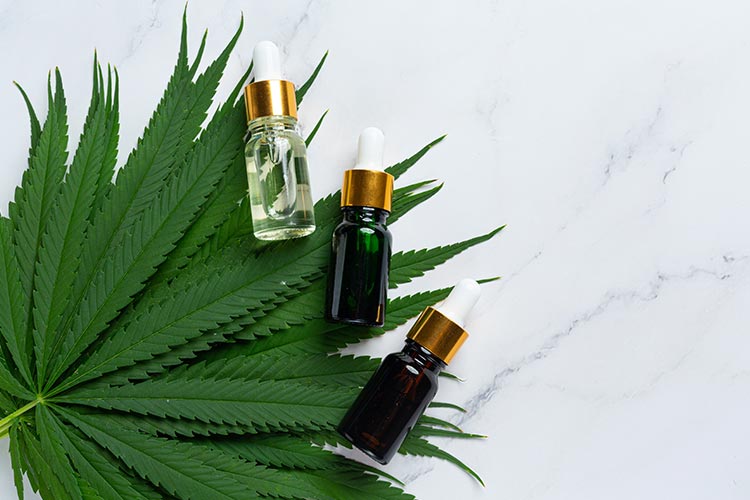 That said, there are dissenting opinions. One study from 2020 found the exact opposite, concluding that five common terpenes—including myrcene—all failed to elicit an ensemble effect by binding to the receptors in the endocannabinoid system.
That said, there are dissenting opinions. One study from 2020 found the exact opposite, concluding that five common terpenes—including myrcene—all failed to elicit an ensemble effect by binding to the receptors in the endocannabinoid system.
Introduction to High-Myrcene Strains
As we suggested earlier, it might be easier to identify strains that lack significant quantities of myrcene than to identify all the ones that feature it. Statistically, myrcene is the most abundant terpene found in cannabis. According to one source, it accounts for roughly 20% of all terpenes found in cannabis overall. That said, let’s take a little guided tour of a few of the most notable high-myrcene strains:
- Sunflower Purple Myrcene: From local DC cultivators Molecular Farms comes a myrcene-heavy strain that offers a great way to relax. Don’t let its vibrant green bud accentuated by bright orange pistils fool you, this strain will help you unwind and kick back after a long day.
- Blue Dream or Takoma Dream. This popular and readily available strain is characterized by sweet berry aromas and gentle cerebral effects. Its high myrcene content contributes to its anti-inflammatory and analgesic qualities.
- White Runtz: A potent, crystal-dusted strain, this classic cultivar is known for imparting a strong euphoric and energizing effect. Those resinous crystals should serve as a warning: This is typically a potent strain with a high THC content.
- Diesel: This family of pungently scented strains are generally known to exhibit classic uplifting and buzzy characteristics, thanks to their generous myrcene and limonene contents.
- Northern Lights: As one of the most famous indica strains of all, Northern Lights (or simply “NL”) is known for a long-lasting euphoria that helps reduce stubborn chronic symptoms such as pain, anxiety, and stress.
- Mango: This family of mango-scented strains hearkens back to an enduring cannabis myth. Because mangoes are naturally high in myrcene, so the saying goes, consuming one about 45 minutes before enjoying cannabis boosts the intensity of the high. While we can’t vouch for the practice ourselves, there’s certainly no harm in trying…
- Kush: We’d be remiss if we left out the Kush family, without doubt one of the most renowned in the cannabis world. Originally descended from the deeply relaxing strains grown in the foothills of the Kush Mountains of Northern India, these strains tend to be potent, flavorful, and memorable.
Explore Myrcene with DC’s Best Selection of Cannabis Flower, Edibles, and More
If reading this post has gotten you fired up about myrcene, we’d love to help you sample it for yourself! While our menu changes regularly based on what’s fresh, we typically stock a wide variety of cannabis products high in myrcene, including Sunflower Purple Myrcene by Molecular Farms, a premium flower that provides a healthy dose of this medically impactful terpene.
As the District’s #1 family-run dispensary, we take pride in helping our customers get the very most from their cannabis purchases. If you have further questions about the myrcene terpene (or any other cannabis-related questions), just ask! We’re here to help.
How to Use an RSO Syringe for Long-Lasting Relief
Have you ever been puzzled by the initials “RSO?” Trust us, you’re not alone. Far from being a brand-new cannabis strain, RSO—short for “Rick Simpson Oil”—is an ultra-potent cannabis extract that’s tailor-made for tackling the most stubborn of chronic conditions. Often dispensed from a cannabis oil syringe, it’s a vital tool for many cannabis patients looking to tame their symptoms the all-natural way.
Because RSO is so potent, it’s essential to know how to use an RSO syringe. And in today’s post, we’ll share everything we know about this powerful remedy, including:
- What is RSO?
- What’s the best way to take RSO oil?
- What’s the best RSO oil dosage?
- Where can I find a reputable source for RSO syringes source?
By the end of this article, you’ll be a bona fide expert in the use of the RSO syringe. And with that said, let’s get to work….
What Is RSO?
We’ve written previously about cannabis concentrates, the potent extracts that have practically taken the marijuana world by storm since their introduction roughly twenty years ago. And while RSO is technically a concentrate, there are a number of details that truly put it in a class of its own.
For one thing, unlike many cannabis concentrates and extracts, RSO was developed specifically for medical use. That’s not to say it’s exclusively for medical use, but it’s designed to be used in a fairly precise way to address chronic symptoms and conditions.
For another thing, RSO has a fascinating backstory. As we mentioned a moment ago, it takes its name from an actual person, in this case, Canadian engineer and cannabis activist Rick Simpson. After reading a study on the potential effects of THC on cancer cells in a rodent model, Simpson decided to create his own, ultra-potent THC product following a skin cancer diagnosis in 2003.
For skeptics, here’s where things get sticky. While Simpson claims that RSO helped cure his cancer, this was never independently verified by medical professionals. That said, in the following decades, many studies suggest that both cannabinoids and terpenes have the potential to kill cancer cells in vitro (that is, in laboratory settings).
On top of this, a large body of both clinical and anecdotal evidence supports the use of RSO to treat many of the symptoms of cancer, including chronic pain. It is also particularly useful for soothing nausea and stimulating the appetites of those undergoing chemotherapy treatment.
The original RSO was a THC-rich extract, with some batches reaching THC levels as high as 90 percent. That said, there’s no reason that RSO oil can’t contain CBD, the non-intoxicating “second cannabinoid.” Check our current selection of RSO syringes, and you’ll typically see at least one high-CBD product in our lineup.
All that said, while RSO syringes have potential recreational applications, we urge you to remember that it’s a highly potent product and should be used with care. In just a bit, we’ll share some guidelines for RSO oil dosage.
RSO’s Potential Benefits
As we mentioned just a moment ago, studies show RSO’s potential to treat many stubborn and serious medical symptoms. Let’s take a moment to dive into that topic a little further. Specifically, why is RSO so particularly suited to chronic symptoms?
When we inhale cannabis by smoking flower or using a vaporizer, the cannabinoids are absorbed through our lungs and take effect, typically within a few minutes at most. But with a cannabis oil syringe, that viscous cannabis extract passes through our liver. This means that while the effects take longer to come on—in some cases up to 2 hours—they also last much longer, in some cases up to 12 hours.
As you might guess, this makes RSO particularly well-suited to addressing long-running medical issues, and at our Takoma Park dispensary, one of the most common reasons customers come to us is to help them address chronic pain. As a number of studies have found, cannabis has the potential to help us address this potentially debilitating condition.
What’s more, an increase in medical cannabis use for chronic pain generally correlates with a decrease in the use of opioids, the class of highly addictive pharmaceutical drugs associated with an abnormally high number of both health risks and overdose deaths.
What other symptoms might RSO potentially help with? In addition to the ones we named earlier, one of the most common uses of medical cannabis is for managing the symptoms of anxiety and depression. And while there’s a robust debate as to whether THC actually increases or reduces the risk of anxiety, a number of studies suggest that using low to moderate amounts of the cannabinoid can help treat many of the symptoms associated with anxiety and depression.
Finally, cannabis has been shown to potentially mitigate the severity of insomnia, the common sleep disorder that affects roughly 30% of American adults at any one time.
How to Use an RSO Syringe: The Basics
Even if you’re used to cannabis vape pens, RSO oil can throw you for a loop. Why? Rather than being a pale or amber-colored liquid, RSO is typically a viscous, dark brown-to-black oil dispensed from a syringe.
Why use a syringe? A couple of reasons. For one thing, because RSO oil is so potent, it’s advantageous to be able to dispense very small dosages. The plastic syringes used to dispense RSO and other concentrates are typically labeled for very precise dosing. And for another, that thick oily liquid can readily stain clothing or furniture! Keeping it in a syringe helps reduce the possibility of an unwanted spill or discharge.
While RSO typically has an intensely herbal flavor and aroma, it’s a surprisingly easy product to use, so long as you follow proper dosing guidelines (more on that in a moment). Whether dispensed into a beverage or onto food, directly into the mouth or in an easy-to-swallow capsule, RSO is as versatile a cannabis product as you could hope to find.
If the idea of tasting a highly concentrated cannabis product doesn’t sound that appealing, some sources recommend placing the desired dosage on a small piece of bread, then folding the piece around the medicine completely to form a sort of edible capsule that can be swallowed with water. Of course, you can also purchase empty gel caps in bulk from many natural foods and supplement stores.
RSO Oil: Dosage, Safety Considerations, and Potential Side Effects
One issue with using cannabis medicine is that there are few, if any, “recommended doses.” Why not? Depending on their age, prior cannabis experience, and other variables, everyone has a slightly different reaction to cannabis medicine. In our long experience, it’s best to start with the lowest possible dosage, then work your way up until you’re getting the symptomatic relief you desire.
In the case of an RSO syringe, that “lowest dosage” is quite small indeed. Many sources, including Rick Simpson himself, recommend starting with a daily dose no larger than half a grain of rice and then increasing the dose slightly only after several days of use.
As we mentioned earlier, the onset time for RSO oil can be quite long, as much as two hours (often depending on the timing of your last meal). If you’re looking for a faster onset time, put the dose of RSO oil under your tongue and hold it there (swishing it around) for 30 to 60 seconds. This allows the cannabinoids to more quickly enter your bloodstream, which in turn enables the oil to take effect more quickly (typically within 45 minutes or less).
Regardless of your dosage, because of the time required for tinctures to take effect, wait at least 2 – 4 hours before taking a second dose. And to maximize the effects, wait at least 15 minutes before eating or drinking anything. Remember that you’re working with a highly concentrated and potent product.
Pro tip: The best way to ingest RSO is by combining it with fat-soluble food items like fatty oils, peanut butter, or good old-fashioned butter. Ingesting RSO with fat-soluble foods allows for the cannabinoids to become more readily available to the receptors, increasing the duration and strength of the effect.
What about the potential side effects of RSO? Some of the more common side effects of consuming too much THC (which RSO is full of) include:
- Dizziness
- Nausea
- Anxiety
- Paranoia
- Impaired perception or body movements
If you’re experiencing any of these symptoms after ingesting RSO oil, it’s important to remember that in the vast majority of cases, you’re not in any danger. While these sensations may be unpleasant, they typically pass quickly. Whenever consuming cannabis, we suggest staying well hydrated and using music to distract from any unpleasant anxiety. Avoiding unpleasant symptoms is yet another reason why we always caution those working with RSO (or any high-potency cannabis products) to: “Start low, go slow.” You can always take more, but never less!
Explore RSO Syringes, Cannabis Tinctures, Edibles, and More with Takoma
If you’re looking to browse the region’s best selection of RSO syringes, we’d love to help! As the District’s #1 family-run dispensary, we stock a wide variety of RSO oil products designed to help you tackle the toughest symptoms. If you have further questions about RSO oil (or any other cannabis-related questions), just ask! We’re here to help.
What Is MCT Oil? Uses, Benefits, and More
If you’ve ever studied a bottle of cannabis tincture, you may have noticed the words “MCT oil” on the label. But…what is MCT oil? While not a cannabis product itself, it’s a healthful and neutral-tasting oil that not only serves as a delivery system for cannabinoids such as THC and CBD, but may impart health benefits of its own.
If you’re interested in giving your wellness a boost with all-natural products, you’ll want to know how to use MCT oil. And in today’s post, we’ll share everything we know, including:
- What is MCT oil?
- What are the types of MCT oil?
- How our bodies metabolize MCT oil
- How to take MCT oil for maximum health benefits
Are you ready? Let’s begin.
What Is MCT Oil?
What’s in a name? “MCT” is short for ”medium-chain triglycerides.” In simple terms, it’s a type of fat that has some very intriguing properties when it comes to our health and wellness.
If you’re wary of the word “fat,” it’s important to note that dietary fats are an essential part of our nutritional intake. And because medium-chain triglyceride molecules are smaller than the long-chain triglycerides (LCT) that constitute most of the dietary fats we consume, they’re easier to digest. This means that they more readily enter the bloodstream, where they become a quick and healthful source of energy.
The best MCT oil typically comes from coconut or palm kernels. Separated from these nuts by a process called fractionation, pure MCT is either used on its own or blended with a proportion of LCT for specific uses.
How much smaller are MCTs than LCTs? It comes down to a question of atoms. While LCTs contain between 13 and 21 carbon atoms, MCTs contain between 6 and 12. The exact number of carbon atoms determines how different types of MCTs are defined and named:
- C6: Caproic or “hexanoic” acid
- C8: Caprylic or “octanoic” acid
- C10: Capric or “decanoic” acid
- C12: Lauric or “dodecanoic” acid
While there’s some debate as to whether C12 / lauric acid is actually an MCT, in practice, most MCT oils consist of C8 and C10 acids. While C6 oil presents some dietary benefits due to its digestibility, there’s a downside, and one you may already be aware of. Washington, D.C. is notorious for its many ginkgo trees. But the characteristically, shall we say…challenging aroma that develops when its seed shells drop to the ground? That’s C6 acid. Trust us, you don’t want that taste in your supplements!
MCT Oil and The Body
While a difference of a few atoms doesn’t sound like much, those carbon atoms add up. As we mentioned earlier, when we consume MCTs, their shorter chain length means they’re more rapidly broken down and absorbed by the body than are regular dietary fats. In particular, MCTs are quickly metabolized by the liver, where depending on your energy needs, they can be used as a rapid energy source or converted into ketones.
Ketones are compounds that are produced when the liver breaks down large amounts of fat. Unlike regular fatty acids, they’re able to cross from the blood into the brain, providing an alternative energy source as opposed to the glucose it ordinarily relies on.
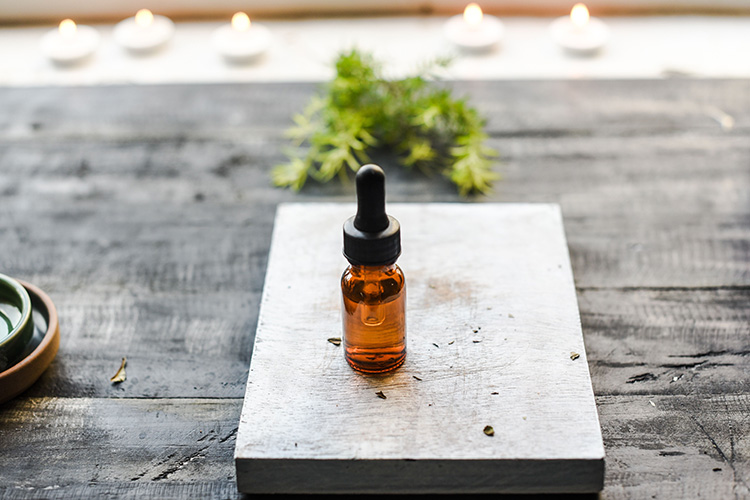
The upshot is that because of this rapid absorption, MCTs are less likely to be stored as fat. And while scientists agree that more research is needed, there are promising indications that this may help with weight loss.
How to Use MCT Oil: What the Research Says
On that note, let’s pivot to the topic of potential uses for MCT oil. Here’s what we know thus far.
According to one study, consuming MCTs may increase the feeling of fullness by boosting production of two hormones that help reduce our appetite. And another study found that a diet rich in MCTs triggered greater fat loss and fat burning when compared with LCT oils. That said, the increase is typically short-lived, as the body adapts within a few weeks.
Then there’s the topic of cholesterol. A number of human and animal studies such as this one suggest that MCTs may reduce cholesterol by triggering the release of bile acids, which play an important role in cholesterol metabolism. Another study on women found that consuming MCT via coconut oil in conjunction with a low-calorie diet reduced LDL (aka “bad” cholesterol) while boosting HDL (aka “good” cholesterol).
MCTs may also have an effect on blood sugar. According to one study, a high-MCT diet increased insulin sensitivity in adults with type 2 diabetes. Another study found that supplementing a normal diet with MCTs improved diabetes risk factors, reducing body weight, circumference, and resistance to insulin.
Uses for MCT Oil: As a Supplement
As the above research suggests, there are plenty of uses for MCT oil, both as part of a regular balanced diet and as a supplement for specific and targeted benefits. It’s easy to add MCT oil to your favorite foods and drinks; some of the most common uses include mixing it into smoothies, salad dressings, and coffee or tea. But…can you cook with MCT? We don’t recommend it, due to its relatively low smoke point.
How much MCT is safe? The answer depends both on how well you tolerate it, and what benefit you’re trying to get. Most experts recommend having a maximum of 4 to 7 tablespoons a day, ideally spread out throughout the day.
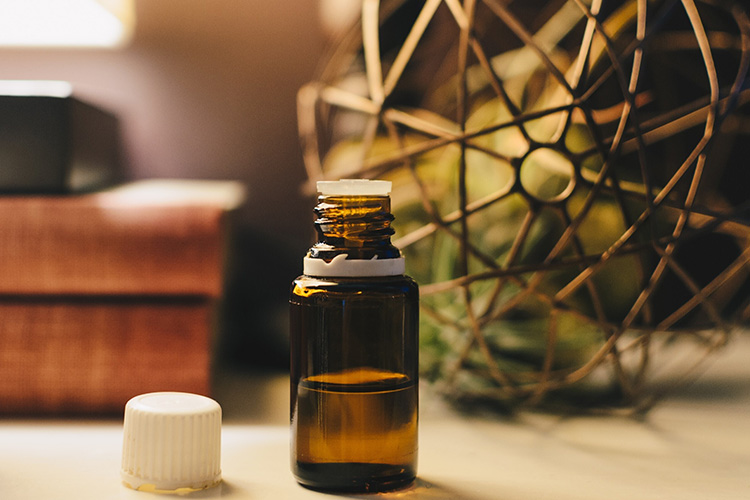
Pay close attention to how you feel afterward. Some common side effects include
- Stomach pain or cramps
- Gas or bloating
- Diarrhea
- Vomiting
If you’re in doubt as to whether MCT oil is right for you, we recommend you speak with a doctor or dietitian first to try and determine the best dose and course of action. While MCT oil is generally regarded as safe to use for the short- or medium-term, you should be careful when using it long-term.
How to Use MCT Oil in Cannabis Tinctures
Given all the potential upsides of MCT, it’s no surprise that it shows up in products such as cannabis tinctures. Fats are a perfect base for cannabinoids such as THC and CBD since they are lipophilic (or “fat loving”) compounds—but there are some important things to know when taking cannabis tinctures.
When we inhale cannabis, the cannabinoids such as THC and CBD pass through our lungs and take effect within a few minutes at most. But with tinctures, when swallowed or mixed with food or drink they take a good deal longer to take effect: about one and up to 2 hours. On the upside, those effects last quite a bit longer than with other forms of cannabis, in some cases up to 8 hours or more.
If you’re looking for a faster onset time, here’s a tip: Try putting the dose of cannabis tincture under your tongue and holding it there for 30 to 60 seconds. This allows the cannabinoids to more quickly enter your bloodstream, which in turn enables the tincture to take effect relatively quickly (typically within forty-five minutes or less).
What’s the right dosage of tincture? The amount will vary depending on your weight, your metabolism, and the strength of the symptoms you’re trying to address, among other factors. That’s why we suggest you begin with a small amount, starting with a quarter of an eyedropper (or even less) for three days. Based on how your symptoms respond, you may want to gradually increase the dosage, keep it where it’s at, or even reduce it to the minimum effective amount.
What’s the right dosage of MCT oil-based cannabis tincture? The right dose depends on the strength or potency of the tincture product you use. At Takoma Wellness, we sell tinctures with as little as 100 mg of THC per 15 ml bottle to as high as 1500 mg THC per 15 ml bottle. In addition to product potency, your correct dosage amount will vary depending on your weight, metabolism, and the severity of the symptoms you’re trying to address, among other factors.
That’s why we suggest you begin with a small amount, starting with as little as a single drop out of an eyedropper (included with the sale of every Takoma tincture), and titrating up each day until you find the greatest symptom relief, with the least side-effects. The next time you’re at the dispensary, ask your Takoma patient consultant for a Tincture Dosage Fact Sheet (available in-store only).
Regardless of your dosage, because of the time required for tinctures to take effect, wait at least 2 hours before taking a second dose. And to maximize the effects, wait at least 15 minutes before eating or drinking anything when you take it under the tongue.
DC’s Best MCT Tinctures: Explore Them Today!
If you’re looking to browse the region’s best selection of cannabis tinctures with MCT oil, we can help! As the District’s #1 family-run dispensary, we stock a wide variety of products designed for every taste and budget. If you have further questions about how to take MCT oil (or any other cannabis-related questions), just ask! We’re here to help.
What Is Limonene? A Citrusy Terpene Explained
Limonene is one of the most abundant terpenes in cannabis, blessing countless strains with its bright and zesty aroma. But there’s much more to this terpene than its signature smell and flavor. What is limonene and why should you care about this terpene? Let’s dive in!
What Is the Limonene Terpene?
Even if you’ve never used cannabis, you’ve almost certainly caught a whiff of limonene already. If you’re a fan of citrus fruits or use citrus scented soaps or cleaners, you probably come into contact with it on a regular basis.
As you can probably tell by its name, limonene is a citrusy terpene with a zesty lemony scent. Apart from cannabis, limonene can also be found in things like rosemary, juniper, mint, fennel, and in the peels of citrus fruits like orange, grapefruit, and lime. Limonene also has numerous industrial and practical uses and can be found in things like cosmetic and cleaning products, beverages, food, and pharmaceuticals.
Exploring Limonene: Terpene Effects
Like with many other terpenes found in cannabis, research indicates that the limonene terpene may have some therapeutic value. Here are a few potential limonene terpene effects and benefits that researchers are investigating.
Stress and Mood: A recent animal study found that limonene may have positive effects on anxiety. Mice that were injected with limonene before behavioral analysis displayed inhibited anxiety-related behavior and elevated levels of the neurotransmitter dopamine, which is linked to feelings of motivation and satisfaction.
Antimicrobial: Many terpenes have shown promise in fighting off certain kinds of bacteria, and limonene is among them. A 2021 study found that limonene “effectively inhibited bacterial growth” of the Staphylococcus aureus bacteria (staph) by damaging the bacteria’s cell membranes. Another study from the same year also found that Escherichia coli (E. coli) bacteria treated with limonene were damaged.
Antifungal: A 2009 study found that limonene exerted a “potent antifungal effect” against the T. rubrum fungus. Another study found that limonene similarly inhibited the C. Albicans fungus growth “by cell wall/membrane damage induced oxidative stress that leads to DNA damage”.
Despite all of these promising findings, it should be noted that the dosage (amount) of limonene required to produce these limonene terpene effects varies and that research into these effects and benefits is ongoing.
Strains High in Limonene
There are several strains that are high in the limonene terpene. If you’d like to get a taste of this zesty terpene, here are a few popular strains known for their limonene content:
- Do-Si-Dos
- OG Kush
- Kosher Kush
- Berry White
- Wedding Cake
Be sure to check out our live online menu to see which of these strains we currently have in stock, or come by Takoma Wellness today to browse a wide selection of cannabis strains and products including many that are high in the limonene terpene. Our patient care team will be happy to help you find a zippy limonene-rich strain. We look forward to seeing you!
Medical Marijuana for Sleep: Tips and Best Cannabis Strains
It’s no secret that more and more patients with trouble sleeping are turning to medical marijuana. In fact, a 2020 survey in the Journal of General Internal Medicine showed that poor sleep is one of the main reasons patients seek medical marijuana in the first place.
If you’re one of the nearly 70 million Americans that suffers from sleep problems every year, don’t give up. Medical marijuana may offer a solution to your bedtime sleep sorrows. We’ll take a look at how medical marijuana may help improve your sleep, as well as some of the best cannabis strains (indica and otherwise) for insomnia, in this post.
Marijuana and Sleep: How Does it Work?
Okay, so we know that sleep is one of the biggest reasons that patients use medical marijuana. But what does science actually say about cannabis’ effectiveness as a sleep aid?
A Recent Clinical Study
Fortunately, we have some clinical data on the subject. One team of researchers at the University of Western Australia’s Sleep Centre examined how cannabis extract affected participants suffering from sleep problems.
The study, published in 2021, was a double-blind, placebo-controlled study. That means some of the participants received cannabis extract while others were simply given a sublingual application with no actual effects. The researchers who administered both the placebo and the cannabis extract didn’t know which was real, a common scientific technique that works to eliminate any sort of researcher bias.
The study involved 24 participants and took place over two weeks. Participants kept a sleep diary over the course of the study to record any changes in their sleep pattern. Researchers also administered a comprehensive sleep test, called a polysomnography, during the course of the study.
The Results
Overall, the study appeared to show that cannabis could be an effective way to fall asleep faster and stay asleep throughout the night. Participants also reported that they felt more well-rested upon waking up in the morning. Moreover, the study showed that cannabis was fairly well-tolerated among all the participants. There were no serious adverse effects, suggesting that cannabis may be a safe way to improve sleep as well.
Cannabis for Sleep: Best Ways to Use Medical Marijuana
So we’ve established that cannabis can provide effective relief for those that suffer from sleep troubles. But how exactly can you best utilize marijuana to improve a night’s sleep?
That depends on what exactly you’re trying to accomplish. Two of the main active ingredients in cannabis, THC and CBD, each play their own role in changing sleep patterns. According to the Sleep Foundation, THC could be an effective way to deal with sleep apnea, to reduce nightmares related to PTSD, and to alleviate chronic pain keeping patients awake through the night.
In contrast, CBD could soothe REM sleep problems and eliminate daytime sleepiness, one of the most prominent side effects of insomnia. You can choose products with different THC to CBD ratios to make the most of these different benefits.
Use Edibles and Time Them Right
You also may want to consider using edible cannabis products to help get better sleep. Edibles have potent, long-lasting effects, sometimes lasting 6 hours or more. As a result, they may be an excellent choice for helping you stay asleep throughout the night. However, you’ll want to make sure you take them at the right time. Edibles can take up to an hour to kick in, though, so make sure you plan ahead and take them at least an hour before bedtime.
Are Indica Strains the Best Cannabis for Sleep?
There’s plenty of conventional wisdom out there that talks about how sativa strains are more energizing and euphoric, while their indica counterparts are more relaxing and best for improving sleep.
While many indicas do demonstrate these properties, not all of them do. Instead, a plant’s cannabinoid and terpene content will determine these effects. In particular, myrcene (one of the most common cannabis terpenes) appears to improve sleep according to some data.
The Best Medical Marijuana for Sleep
Finally, the moment you’ve all been waiting for! Here are some of the best cannabis strains that medical marijuana patients visiting our dispensary have reported help them with sleep.
Granddaddy Purple
It should come as no surprise that one of the best cannabis strains for medical marijuana patients seeking better sleep is this legendary indica. Grandaddy Purple made waves when it burst onto the scene in 2003, and it’s solidified itself as a top-shelf indica in the 20 years since. This cross between Purple Urkle and Big Bud has a high THC content, usually around 25% or higher. That makes it a perfect nightcap to tuck you in after a long day.
Sunflower Purple Myrcene
This heavy indica is loaded with myrcene, the perfect terpene for lulling you into a deep, restful sleep. Sunflower Purple Myrcene is so packed with this terpene that they put it in its name. This cannabis strain is also an indica, making it one of the best strains out there for medical marijuana patients seeking better sleep. Its THC level usually rests around 20% to 25%, making it accessible for experiences and newer cannabis consumers alike.
Hindu Kush
One of the original indica strains to make its way to Western cannabis consumers is also one of the best medical marijuana strains for sleep. With a THC content around 25%, Hindu Kush has lent its genetics to countless indica strains since its introduction to breeders in the 1960s. It’s a great strain for banishing daily stress and anxiety and lulling you into a comfortable, tranquil snooze.
Find the Best Strain for Sleep and More at Takoma Wellness
You’re not going to want to sleep on the indica cannabis strains in this post if you’re a medical marijuana patient trying to get better rest. Fortunately, you can find all of them at Takoma Wellness.
That’s not all, though—we also carry a huge variety of cannabis products for any ailment. To learn more, check out our online menu. And if you’re not a medical marijuana patient yet, we can help you complete your application. We’re looking forward to seeing you!
Cannabis Topicals: How Do They Work?
Cannabis-infused topicals can be traced as far back as ancient Egypt, and today you’ll find a wide variety of topical THC and CBD products formulated to serve a wide variety of purposes.
In this post we will explain what cannabis topicals are and how they work. We will also cover the differences between topical THC and CBD products and how they might be used. Let’s dig in!
What Are Cannabis Topicals? How Do They Work?
Cannabis topicals are cannabis-infused products that are applied to the skin for localized relief. Cannabis extracts can be added to any number of topical products, and today you’ll find everything from salves, lotions, and balms offering a variety of formulations targeted at specific concerns.
Cannabinoids like THC and CBD are known for the effects they produce when inhaled or ingested, but they are equally able to produce effects in the skin. How? We can thank a system of receptors called the endocannabinoid system (ECS).
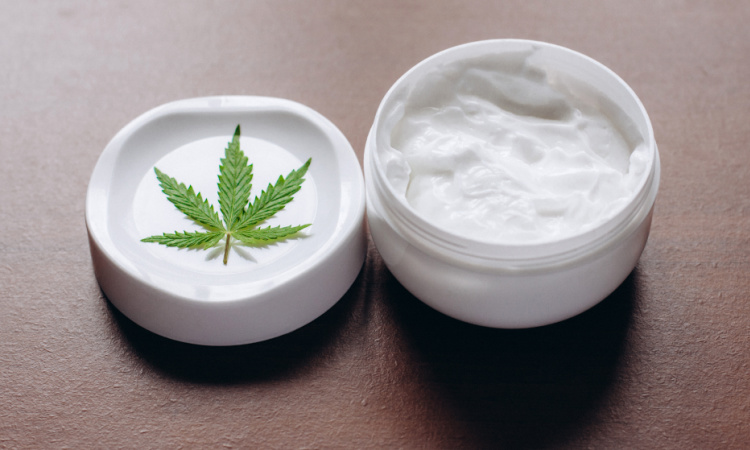
Aside from impacting basic biological functions like sleep, appetite and mood, the ECS is also active in the skin where there are many receptors able to utilize cannabinoids when applied topically.
While research on the endocannabinoid system’s role in skin function is still in early days, investigators are uncovering several potential benefits for using cannabinoids topically, such as:
- Reducing inflammation
- Pain relief
- Antimicrobial effects
- Anti-itch benefits
- Oil gland regulation
Together these properties may offer relief for many different symptoms or conditions related to the skin, and initial research has looked at everything from the treatment of inflammatory skin conditions like eczema, to the treatment of neuropathic pain and even how cannabinoids might impact more common skin conditions like acne.
Once applied, you should feel the effects of a cannabis topical within minutes, and effects typically last for about two hours.
Topical Versus Transdermal
You may come across another category of products when searching for cannabis topicals called transdermals. Transdermal products are, in fact, topical in that they are also applied to the skin. But there is one important difference between a topical and a transdermal product: Transdermal products are designed to penetrate all layers of the skin to eventually reach the bloodstream.
Most often sold as gels or patches, transdermal products offer deeper penetration of the targeted areas to which they are applied. Because they reach the bloodstream, they can offer system-wide benefits or effects as well. Transdermal patches, in particular, are designed to offer a steady and slow release of cannabinoids over a period of several hours, making them a great option for extended relief.
Like lotion and salve topicals, the effects of a transdermal gel or patch should be felt within a few minutes. The effects of gels last on average two to four hours, while transdermal patches can be designed to release their active ingredients for many hours. Be sure to check out the product label since this will vary from patch to patch.
While there are topical and transdermal products featuring a variety of different cannabinoids on the market, in most cases you will find the main active ingredients in cannabis topicals are THC, CBD or a combination of both. Let’s unpack them next.
Topical THC: Cannabis Salves, Lotions and More
One common question we get at Takoma Wellness Center is whether THC-infused topicals will make a person feel intoxicated, or whether using THC topicals might show up on a blood test.
Since topical products cannot penetrate the skin to reach the bloodstream, you should only feel localized effects to the application when using THC topicals. And, as research supports, using THC topicals alone shouldn’t show up in a blood test.
THC topicals are being investigated for the treatment of inflammatory skin diseases, neuropathic pain and even for the treatment of glaucoma. Many patients use THC-infused salves, lotions and balms to help them relieve muscle soreness, joint pain or other sources of pain and discomfort.
Keep in mind that transdermal products containing THC will penetrate through the skin to enter the bloodstream, which may produce feelings of intoxication and can show up on blood tests.
Topical CBD: How Do CBD Topicals Work?
Do CBD topicals like a lotion work any differently than topical THC? The answer is yes and no.
When applied topically CBD works, in essence, in much the same way as topical THC: by activating the cannabinoid receptors that are found in the skin. But CBD modulates different receptors than does THC, meaning that CBD may exert similar effects as THC but achieves these effects in different ways.
Like THC, CBD is being investigated for inflammatory skin conditions and for the treatment of different kinds of pain and discomfort, among other uses.
Some patients prefer the topical effects of CBD, or want to avoid THC altogether, making topical CBD a great option. But since THC and CBD work differently in the body to provide similar benefits, many products will feature a combination of both THC and CBD in order to take advantage of their synergistic effects.
When it comes to THC versus CBD topicals, there is no right or wrong answer. Ultimately it comes down to experimenting with different products and formulations to find what works best for your needs.
Cannabis Topicals: Final Thoughts
We hope this introduction to cannabis topicals has been helpful! If you have further questions about how these cannabis products work, or you’d like some help navigating the topical products we carry at Takoma Wellness Center, please come visit us today.
Our team is always here to help you make the best and most informed decisions you can when shopping for medical cannabis. Of course you can always browse our live online menu, too! Either way, we look forward to serving you
Fuel Biscuits Strain Review
It seems like there’s no shortage of rare boutique strains out there. And while some of them aren’t exactly worth your time, many of them are.
One that falls into that latter category is the topic of today’s strain profile. We’re talking about Fuel Biscuits, an indica-dominant strain that’s related to another genetic line you’ve probably heard of. We’ll check out some of the main traits of Fuel Biscuits in this strain review, along with some benefits it may have for medical marijuana patients.
Fuel Biscuits: A Big, Green, Indica-Dominant Marijuana Strain
There is no denying the visual appeal of strains with dazzling purple hues or bright orange hairs. And while these definitely can be the marks of high-grade cannabis, those colorings aren’t the be-all, end-all of marijuana quality. In fact, many verdant green colored plants match the caliber of any rainbow-hued buds.
That’s exactly what you get with Fuel Biscuits. Its flower features bursts of vibrant green colors that range from lime to deep forest green. It’s got an aroma that you’d only find in a cannabis plant, combining tones of diesel fuel with citrus, sweet, sour, and spicy scents. When smoking this strain, the fragrant building blocks coalesce into a sweet flavor, leaning heavily on qualities like berries and cherries to create a lip-smacking taste.
A major determinant of Fuel Biscuits flavor is its genetic line. As a GSC x Gelato cross, it’s a member of the illustrious Girl Scout Cookies family. That makes it the closest thing you get to cannabis royalty these days. It also gives Fuel Biscuits a solidly indica-dominant genetic profile, which influences its effects.
Effects and Properties of Fuel Biscuits
Appearance, aroma, and flavor are only part of the picture that Fuel Biscuits paints, of course. The rest of the image comes clearly into view once you take a look at this strain’s effects. And with an average THC content that hovers between 25% and 27%, Fuel Biscuits flower offers potency.
Its indica-dominant properties include heavy body relaxation, with tingles that hang over your body like a warm blanket. However, it does demonstrate some more properties typical of a sativa strain: It definitely features a rush of euphoria along with a general uplifting feeling. Make sure to keep snacks on-hand though, since this strain can instill a serious case of the munchies.
Possible Benefits of the Fuel Biscuits Strain
If you’re a medical patient, there’s plenty to love about Fuel Biscuits. Patients have noted that it may be an effective way to lessen anxiety and stress. Additionally, some have reported that it helped them with feelings of depression. As with most strains of medical cannabis, it could help patients find relief from chronic pain. Finally, it also could improve low appetite.
Experience the Fuel Biscuits Strains at Takoma Wellness
Are you interested in trying this strain for yourself? You’re in luck! You can find this rare strain at Takoma Wellness, along with a huge variety of other strains and other products in our online store.
Cannabis Concentrates: What is THC Wax?
For decades, cannabis cultivators have been on a quest to increase the potency of cannabis cultivars, but fresh flower can only express so much THC before it tops out, usually in the 30% - 35% THC range. Enter cannabis concentrates.
As the name suggests, concentrates have "concentrated" levels of chemicals from the cannabis plant, particularly the psychoactive cannabinoid THC or the non-intoxicating CBD. Although all concentrates share very high potency levels, there are important distinctions between different products.
For instance, THC wax, also called weed wax or simply just wax, is a specific type of concentrate with a distinctive appearance and texture that remains a favorite among the customers at our DC dispensary. Learn more about the nuances of cannabis wax and see if it’s the right product for your needs and preferences.
What Is Wax?
THC wax is a type of cannabis concentrate, which is a consumable product that contains concentrated levels of chemicals from the cannabis plant, namely the psychoactive cannabinoid THC. Wax has a sticky texture and opaque appearance and contains high amounts of potent cannabinoids.
The exact consistency of wax depends on the extraction process a manufacturer uses and how forcefully they whip their final product, but generally these concentrates range from crumbly on one end to creamy on the other. People typically consume (or “dab”) wax from specialized dab rigs, but it's also possible to use wax in concentrate-friendly vape pens or even mixed with cannabis flowers.
Because wax has such a high potency, it's not typically recommended for newcomers to cannabis products. Concentrates like wax can be especially useful for medical patients treating hard to manage and chronic symptoms, or are enjoyed by cannabis consumers who have experience with their own tolerance levels and know how THC affects their bodies.
How Is THC Wax Made?
When weed is made into wax it falls into a category of concentrates known as "butane hash oils" (BHOs) since manufacturers use the compound butane in the extraction process. After the extractors gather their dried and cured cannabis buds, they place them in a specialized chamber where they introduce butane to strip away the cannabinoid and terpene-rich trichomes from the plant material.
Using advanced machinery to carefully control temperature and pressure, this process eventually rewards extractors with a sticky weed concentrate that they can agitate or whip to create their desired consistency, which can range from crumbly to creamy.
Why Choose Weed Wax Over Other Concentrates?
Since all cannabis concentrates share similarly high potency scores, why would customers choose wax over another product? Well, rather than looking into an extract's intensity, people often consider other factors like consistency or flavor when differentiating concentrates and deciding what to buy. Customers who are on the fence over whether wax is the right choice should consider a few key distinguishers.
Texture and Ease of Use
One of the key features that sets weed wax apart from other concentrates is its malleable texture. Typically, wax is soft, smooth, and easy to handle, making it one of the simplest concentrates to dose precisely when dabbing. This “scoopable” texture is different from both soupy sauce and brittle shatter, both of which are far more challenging to deal with. Wax can easily be applied to a dab rig or vaporizer, making it a particularly good choice for people who want a no-fuss dabbing experience.
Versatility
This famous consistency also makes weed wax one of the most versatile concentrates fit for many different situations. While weed wax works great in dabbing rigs, it’s also easy to incorporate into flower for an extra intense joint, bong, or blunt session. You could also portion your weed wax and put it into a concentrate chamber for a vaporizer or wax pen without serious issues. This flexibility makes wax suitable for a wide range of consumption methods and preferences — perfect for people who enjoy using weed in a variety of ways.
Affordability
Compared with some other weed concentrates like live rosin, wax is a cost-effective choice for weed consumers. Since wax products often go through solvent-based extraction, they’re easier to mass produce versus solventless extracts, often translating to lower costs for consumers. True, wax can be more expensive upfront versus flowers, but its high potency levels mean dabbers don’t need as much product to achieve potent results. As long as you take care to store their wax properly (i.e., away from heat and light), you could get a lot of use out of just one purchase of wax.
Purity
Solvent-based concentrates are sometimes looked over in favor of those made without chemical solvents. In reality, when produced by professional extractors there’s minimal chance of residual butane ending up in your final product. High-quality wax is made using advanced extraction machines and methods that are able to remove even microscopic impurities, resulting in a cleaner and tastier end product. Many people who use lab-tested wax rave about how much smoother the inhalation feels and how they don’t really taste any harsh chemicals or plant matter. While wax may not be as terpene-rich as live rosin, it still has a great reputation for exceptional and natural cannabis flavors at a fraction of the cost.
How To Use THC Wax
There are many ways to use weed wax and to get the most out of this unique cannabis concentrate.
- Dabbing: Arguably the most popular consumption method, dabbing wax involves using a special bong-like device called a dab rig to vaporize weed wax using a nail attachment and a blowtorch. For those who don't feel comfortable wielding a blowtorch, products like e-nails and e-rigs offer a similar dabbing experience without fire.
- Vaporizing: Many vaporizers contain a heating chamber specifically designed for concentrates. These wax-friendly devices can reach temperatures high enough to produce vapor from viscous substances like extracts. Some modern vaporizers have adjustable controls to control the nature of your vape session.
- Mixing: Mixing a bit of THC wax with ground flower is another popular way to use it. In fact, the method is so popular that it’s been dubbed "twaxing" when rolled into and onto a flower-filled joint or pre-roll. Cannabis wax can add an extra boost to the smoking experience, change the flavor profile of your flower, and may help keep the rolling paper from unraveling.
While wax may not have the aesthetic appeal of shatter or the rich aromatic profile of something like live rosin, it offers a high-potency experience in one of the most convenient consistencies.
Shop Quality THC Wax at Takoma Wellness
Cannabis wax is a unique concentrate that is tasty, potent and versatile, and it’s become a go-to choice for many cannabis consumers. Like all cannabis concentrates, wax is more potent than other smokable forms of cannabis and its high potency levels are most often sought out by medical cannabis patients and consumers who are familiar with THC and its effects.
If you’ve been wanting to explore the wide world of THC wax, we’re here for you. Stop by our DC dispensary to chat with our knowledgeable team and find the wax or cannabis product that’s right for you. At Takoma Wellness, you can find artisan-grade flower, high-quality edibles, vapes, concentrates, and so much more. Visit us in-person or browse our online menu for more details.
What Are Cannabis Concentrates?
Cannabis has come a long way from the days of hand-rolled joints filled with homegrown bud. Today’s dispensary shelves are filled with a variety of cannabis products that can be used in a variety of ways.
One of these is cannabis concentrates, a collection of products prized for their high potency and bold flavors. What are concentrates and what do you need to know about them? Let’s dive in!
What Are Concentrates?
Cannabis concentrates are extra-potent cannabis products that feature much higher cannabinoid and terpene levels than cannabis flower. Some people think that concentrates are a new thing, but in reality hash (the original concentrate) has been used for over a thousand years and perhaps much longer. Today, there are many different types of extracts out there, all differing in shape, texture, consistency, and appearance.
Concentrates are made by using various methods to collect the trichomes that cover cannabis plants. It’s kind of like squeezing the juice out of an orange so you can enjoy the really good stuff. Trichomes are small glands that contain the cannabinoids and terpenes, and concentrating them creates a final concentrated product with a high potency level and strong flavor/aroma.
Perhaps the most important distinguishing characteristic of concentrates, and one to be mindful of when consuming these products, are the high THC levels. While cannabis flower can reach about 30% THC content, it’s very common to see a concentrate clocking in at anywhere from 50%–90%+ concentrated THC.
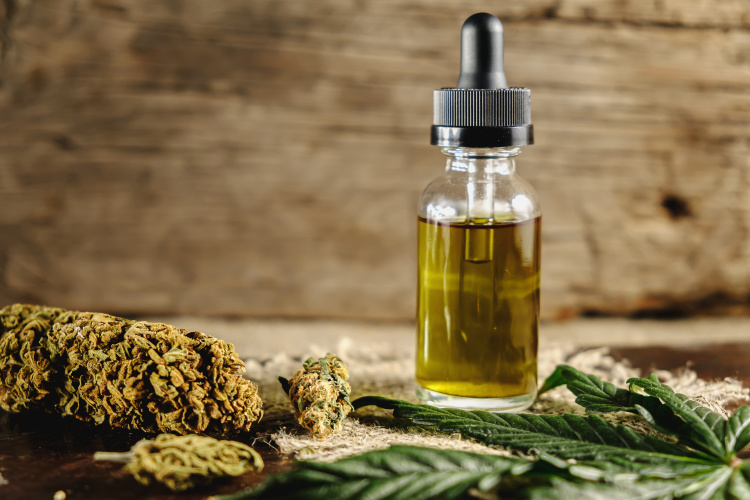 How Are Concentrates Made?
How Are Concentrates Made?
There are many different types of concentrates and many different ways to make them. In general, cannabis concentrates fall into one of two categories depending on how they were made: solvent-based and solventless.
Solvent-based concentrates are made with the use of a solvent like butane, ethanol, or carbon dioxide, which is purged from the final product after extraction. Solventless concentrates, on the other hand, are made using mechanical and physical methods that avoid the use of extra solvents altogether.
Shatter, for example, is a solvent-based concentrate typically made by using liquid butane to strip plant material of its potent trichomes. Rosin, on the other hand, is a solventless concentrate made by applying heat to plant material and squeezing the resin/rosin right out of it with pressure. Shatter and rosin are two types of concentrates made through very different methods but they usually reach around the same level of concentrated THC.
It’s up to you to decide if a concentrate’s extraction method matters to you or not. While some people feel that solventless concentrates are more health-conscious, others prefer the fact that solvent-based extracts tend to have higher levels of concentrated THC. In addition, any concentrate for sale at our dispensary has been safety and quality assured, meaning that you don’t have to worry about unsafe levels of residual solvents in any product we sell.
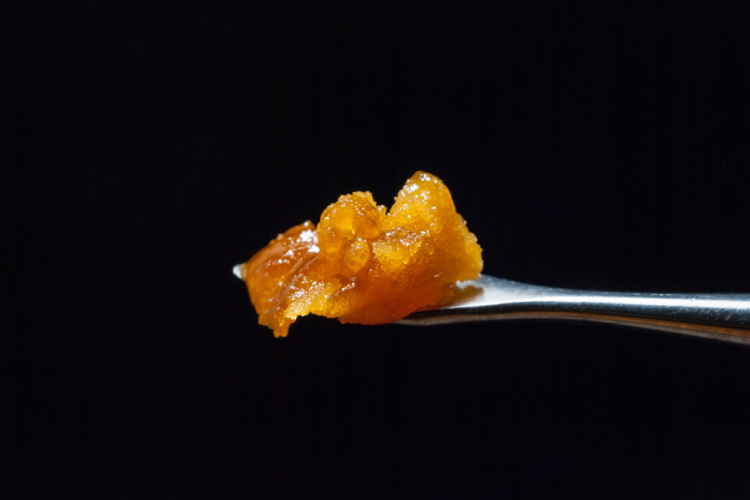 How Do You Use Concentrates?
How Do You Use Concentrates?
Most of the time, cannabis concentrates are either smoked or vaporized.
Many different types of vaporizers can be used to vape concentrates. Conventional vaporizers, wax pens, vape pens, and special water pipes called dab rigs can all work to vaporize concentrates and extracts. Just make sure that your vaporizer is fully compatible with concentrates and extracts before using it.
Cannabis concentrates can also be smoked, although handling some of them can be a frustrating experience since they’re so sticky and viscous. You can add concentrate on top of the flower in your bowl or sprinkle it into your joints to give them a boost in potency.
Just remember that concentrates are very potent, so very small amounts will contain a high number of milligrams of THC and other active ingredients. Start low and go slow with concentrates, and consider using a microscale to measure out precise dosages.
Find Different Types of Concentrates at Takoma Wellness
From some simple hash and kief to potent distillate oils and sticky rosin, we’ve made sure to stock our dispensary with many different types of concentrates. Come by our Takoma, DC dispensay today or shop our online menu right now to speak with our wonderful team and find the right concentrate for you!
Finding Your Ideal Dosage for Edibles
When it comes to cannabis, there's no question that flower remains the most popular way to enjoy it. However, there's a lot that can be said about edibles, especially as the legal market continually expands and new products are constantly hitting dispensary shelves. Whether it's cannabutter, gummies, or brownies, edibles have a long history in cannabis culture, and manufacturers continue to cater to the cannabis community's insatiable demand for delicious goods.
With such a wide range of tasty treats in today's cannabis market, it may be tempting to grab any bag of gummies and start munching to your heart’s content. However, if customers don't take proper precautions when evaluating their edible dosage, what could have been a euphoric experience can turn into an unpleasant one.
To have a stress-free session that will leave you relaxed rather than anxious, learn how to dose your edibles for the best cannabis experience possible.
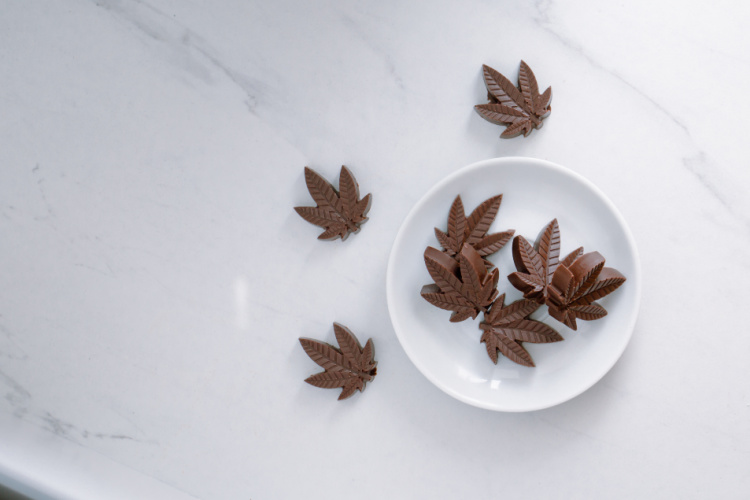
What Are Edibles and How Do They Work?
Let's start with a basic definition: “Edibles” are foods or beverages that include the cannabis plant's active and unique compounds, such as cannabinoids. Although most commonly associated with the intoxicating effects of the cannabinoid THC, edibles can contain any collection of cannabinoids, including the non-intoxicating CBD and lesser-known molecules like CBG or CBN.
When you eat an edible, these cannabinoids have to go through the digestive process rather than straight into your system through the lungs, which means the effects will take longer to enter the bloodstream. Since the liver breaks down these cannabinoids, some may assume they aren't as intense as high-absorption products like pre-rolls or vape pens, but this isn’t necessarily the case. It's important to consider a few extra points closely to understand the complexities of edible dosage better.
11-hydroxy-THC
First, when THC metabolizes in the liver, it doesn't enter the bloodstream as typical THC. Instead, it transforms into another cannabinoid known as 11-hydroxy-THC (11-OH-THC). Why does this matter? In one word: Potency. According to some studies and plenty of anecdotal testimonies, 11-hydroxy-THC can make edibles feel stronger than their smokable counterparts.
So, even though THC is metabolized by the liver before entering the bloodstream, it might be more intense due to 11-hydroxy-THC's powerful impact. Put another way: While the bioavailability (i.e., the amount of cannabinoids accessed by your body) decreases, the apparent dosage increases, leading to the feeling of stronger effects with less THC.
Onset Time and Duration
Another reason it's more common to misjudge your milligrams with an edible dosage is its delayed onset time. Since it takes time for your body to metabolize THC, you won't feel the hit of a cannabis edible immediately. Sometimes, edibles can take up to 90 minutes before you may feel any of its effects. Due to this delay, it can be common for consumers to take more early on—only to regret that decision later in the day.
The effects of edibles also tend to have a more prolonged impact, typically 4-6 hours or longer, versus the sharp spike and quicker comedown of a smokable joint or vape pod.
Other Factors to Consider
Many secondary factors could influence how you experience your cannabis edible dosage. For instance, even if two consumers took the same cannabis dosage, one person might feel a relaxing body buzz while the other could feel very little at all. There are many possible reasons for this, but a few of the most common factors include the body mass index (BMI), average metabolism, and the age of the person
Plus, if someone is more experienced with cannabis and has a higher tolerance to THC, chances are they can take larger doses of an edible without experiencing adverse effects. Lastly, if you already have food in your stomach, there's a better chance your edible dosage won't hit as hard as your body has to deal with a greater digestive load.
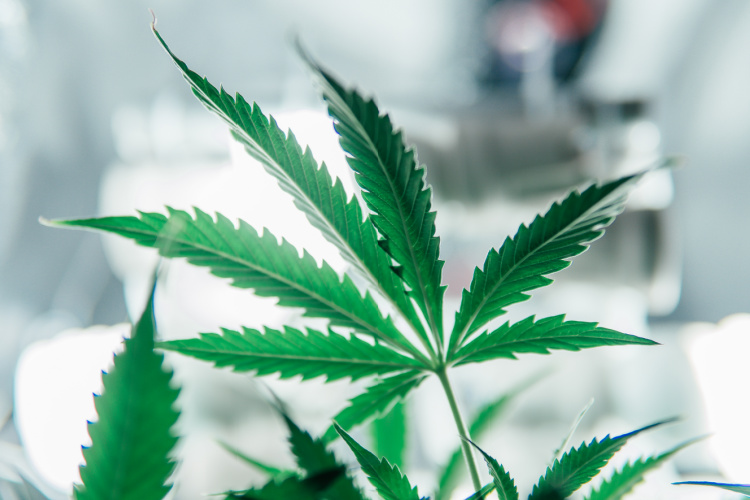
Is There A Recommended Dosage for Edibles?
Since everybody has different reactions to edibles—and there's no FDA guidance on how to administer them—finding the perfect dosage for you and your body will take some time and experimentation. However, there are a few general guidelines on how different milligram ranges of THC typically impact new users.
How To Dose Edibles: General Potency Guidelines
Remember that these are general guidelines and don't apply to everyone equally. It's always best practice to start low and slow to avoid unwelcome side effects.
- 1 - 2.5 mg: This low edible dose tends to be perfect for new consumers who have minimal tolerance to THC or for experienced users who are more interested in microdosing during their workday without experiencing an overwhelming "high" sensation.
- 2.5 - 15 mg: In this range, most users will experience impacted coordination and perception, but it's typically manageable if you have a decent tolerance for THC. More experienced users who no longer feel the effects of microdosing—or who want more significant symptom relief—often dose in this range.
- 30 - 50 mg: It's likely consumers with a low tolerance to THC will have adverse effects if they start in the 30 - 50 mg range. However, those who have a high tolerance for THC might feel a stronger and more pleasant high, ideal for symptom relief in a private setting when patients don't have to be productive.
- 50 - 100 mg: These high doses are recommended only for patients with a high tolerance for THC and who may be looking for extreme relief. The effects of THC edibles at these levels are almost guaranteed to alter perception and impair motor functions, as well as give users an intense euphoric sensation. There's also a greater risk for adverse effects like nausea, paranoia, and body tremors at these higher levels.
Edibles for Beginners: Our Top Tips
The standard advice when dosing edibles is simple: "Go low and slow." Just because you can't feel the THC in a gummy within a few minutes doesn't mean it's not working its way through your system to create a powerful experience.
For the lowest risk of adverse reactions like anxiety and paranoia, it’s recommended that beginners to edibles should stick with a tiny concentration of THC and avoid the temptation to gobble more gummies early in your session. First-time consumers typically won't know how a gummy feels until about 45 - 60 minutes after swallowing it—sometimes even up to 90 minutes—so it's important to stay strict with your initial edibles dosage and take it in a controlled environment.
After you gain more experience with THC, you may want to experiment with slightly higher edible dosages at each session. The safest way to ramp up an edible's intensity is through "incremental titration." Put simply, this means gradually increasing your maximum edible dosage by just a few milligrams with each session and monitoring its effect on your body. It's a good idea to keep an edible dosage journal where you record key information like the edible you took, how much THC was in your serving size, and any notable effects you noticed. The data in your edibles dosage diary will help establish your baseline tolerance and determine the levels of THC that work best in different situations.
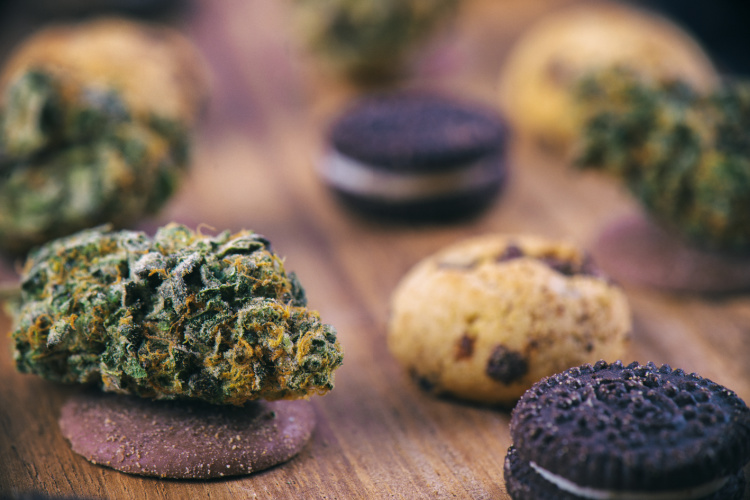
Shop Quality Cannabis Edibles and More At Takoma Wellness Center
Interested in incorporating cannabis edibles into your routine? We’ve got you covered. Head to Washington DC’s favorite medical dispensary, where you’ll find dozens of tasty products from some of today's hottest edibles manufacturers.
Whatever you’re looking for, Takoma Wellness offers medical marijuana patients plenty of lab-tested, potent, and high-quality cannabis products to suit your needs. If you’re in the DC area, stop by and say hello to our knowledgeable team, or browse our online menu for premium cannabis and pick up your delicious edibles in-store. You can also choose convenient delivery and get everything sent right to your door.
If you have questions about the new self-certification process in DC, just reach out! We’re happy to help.


